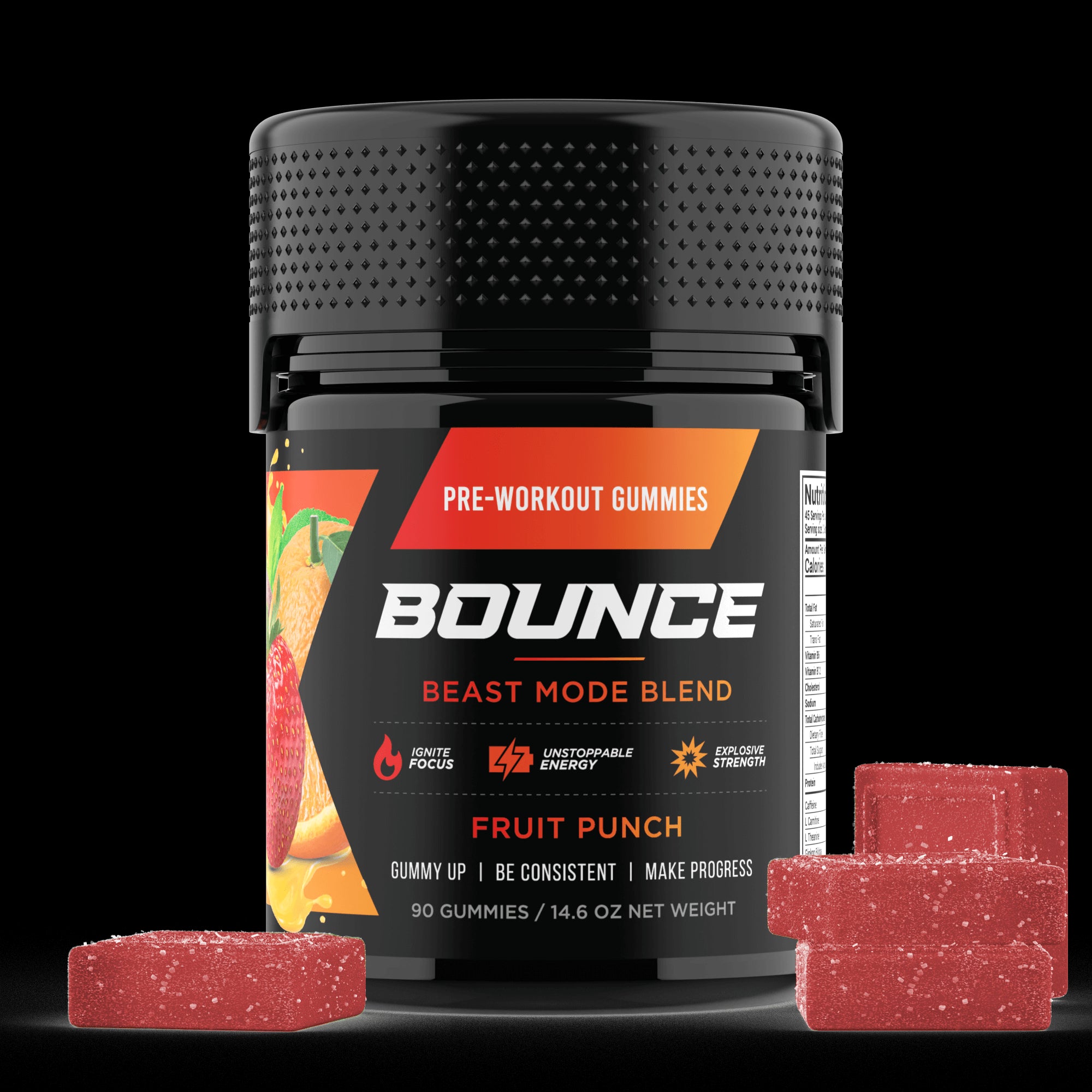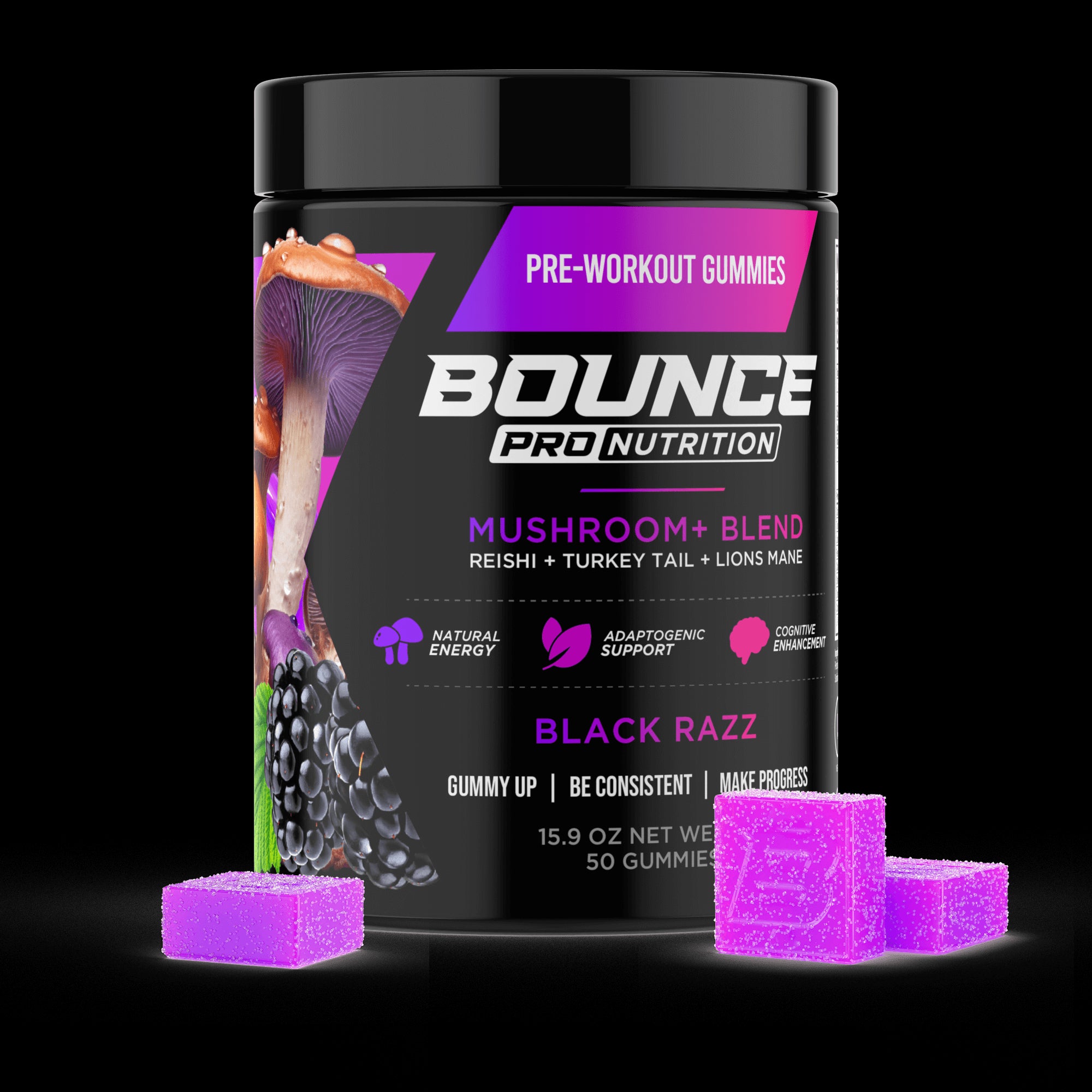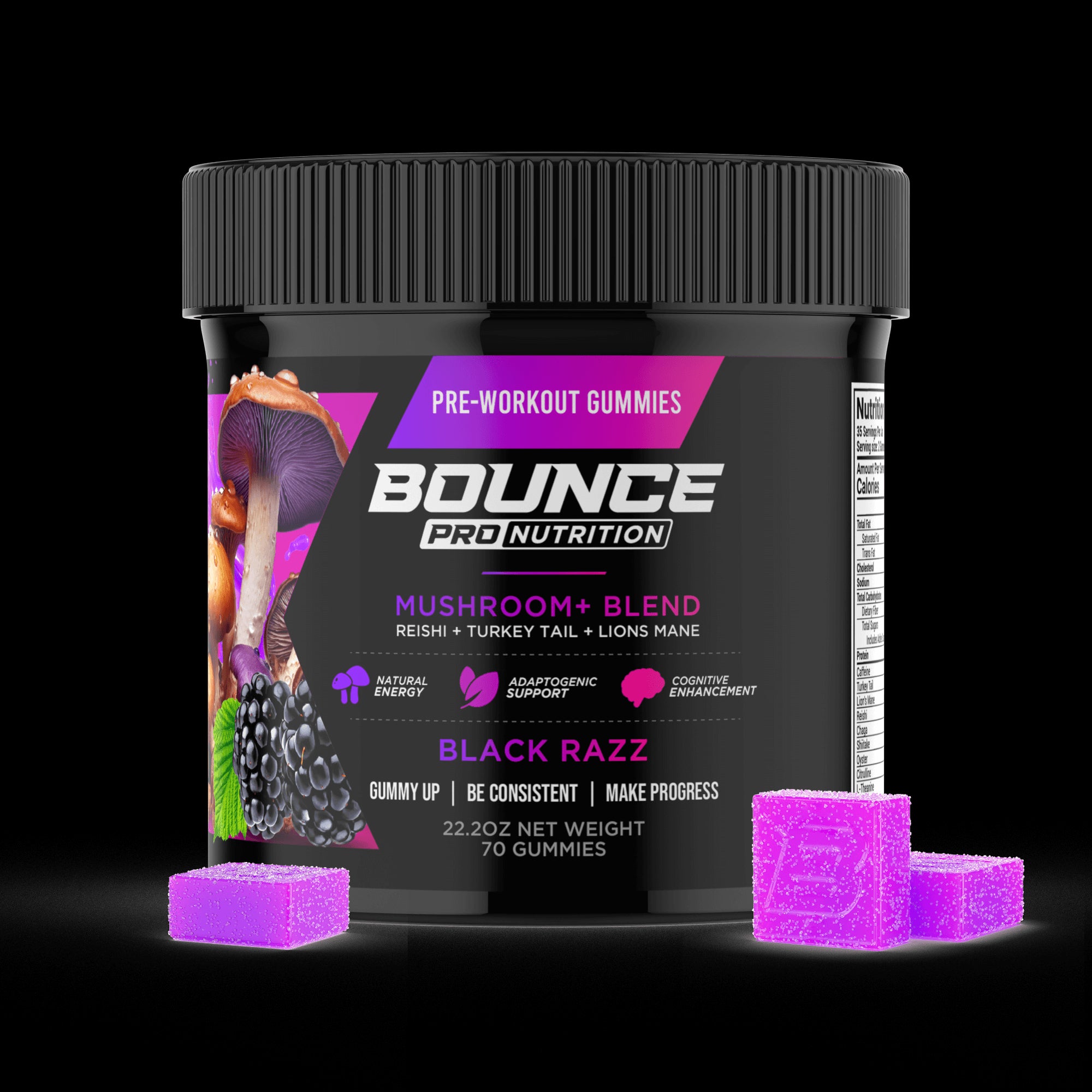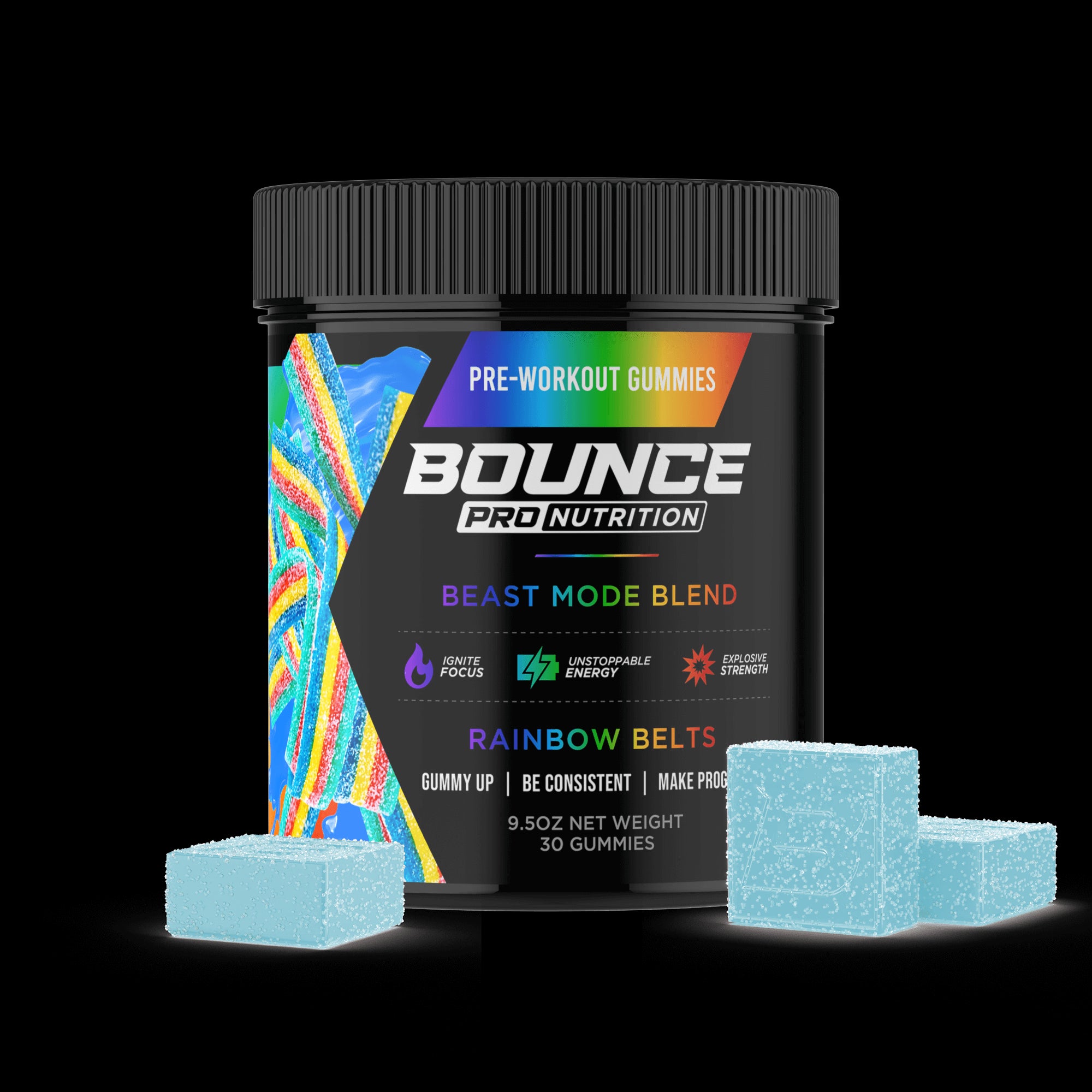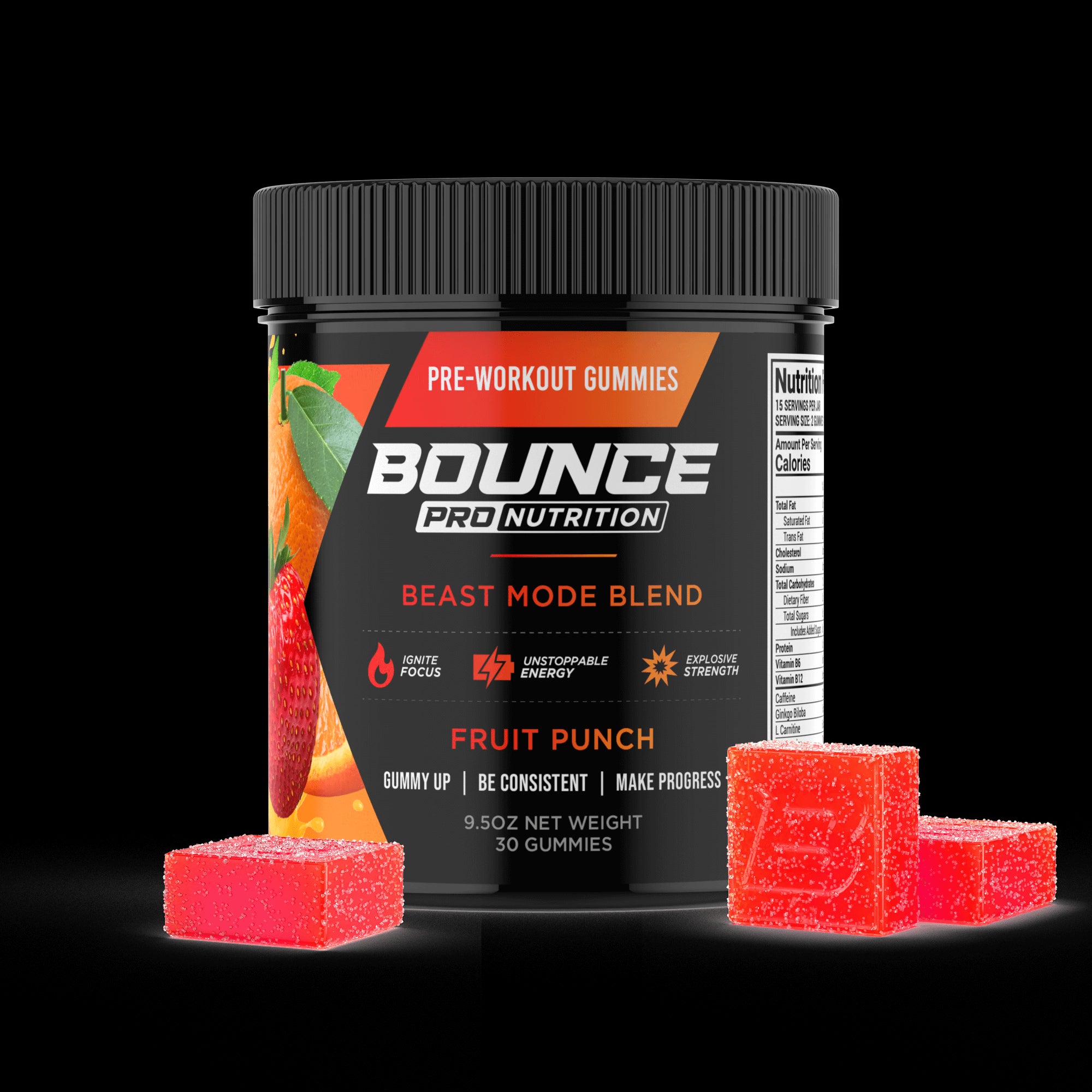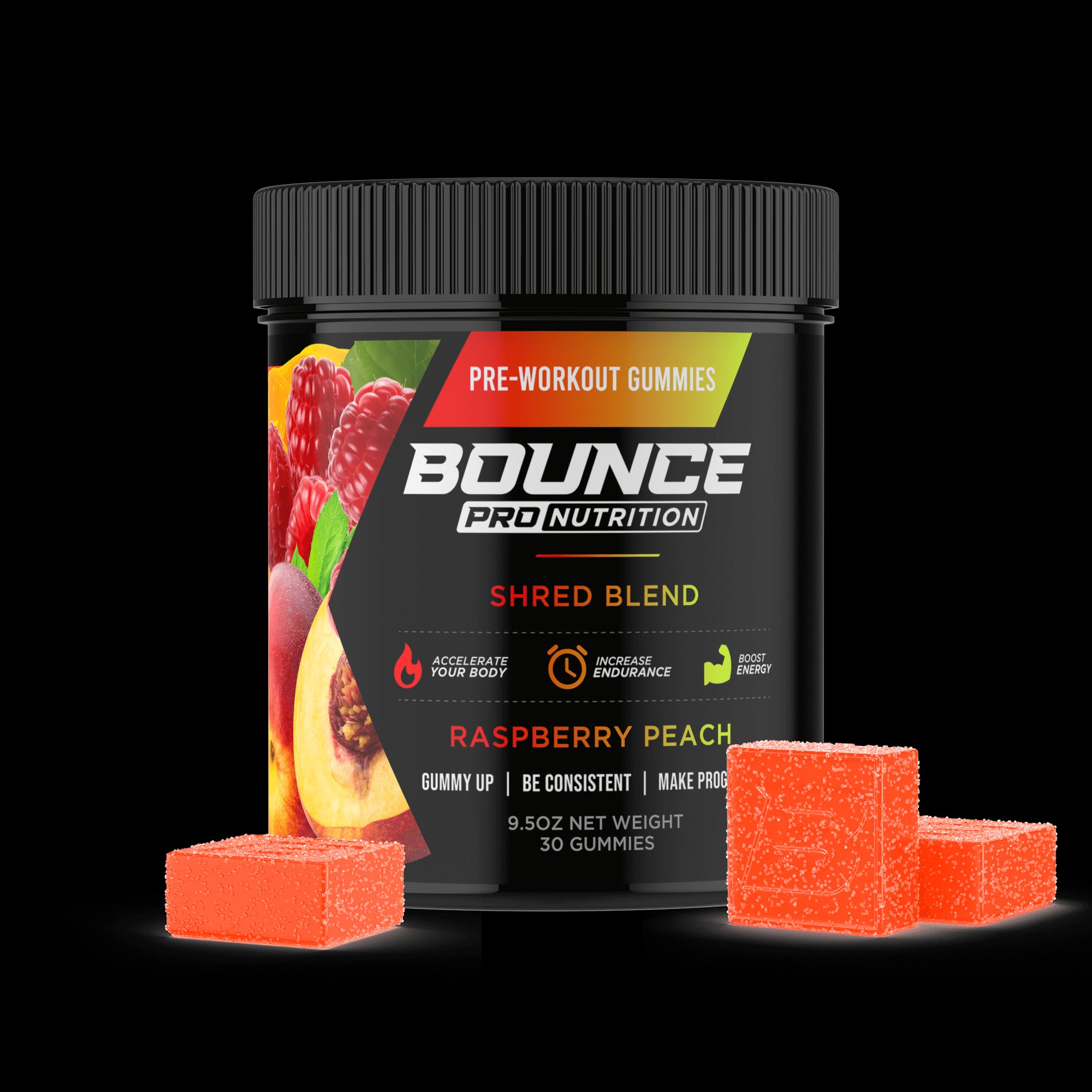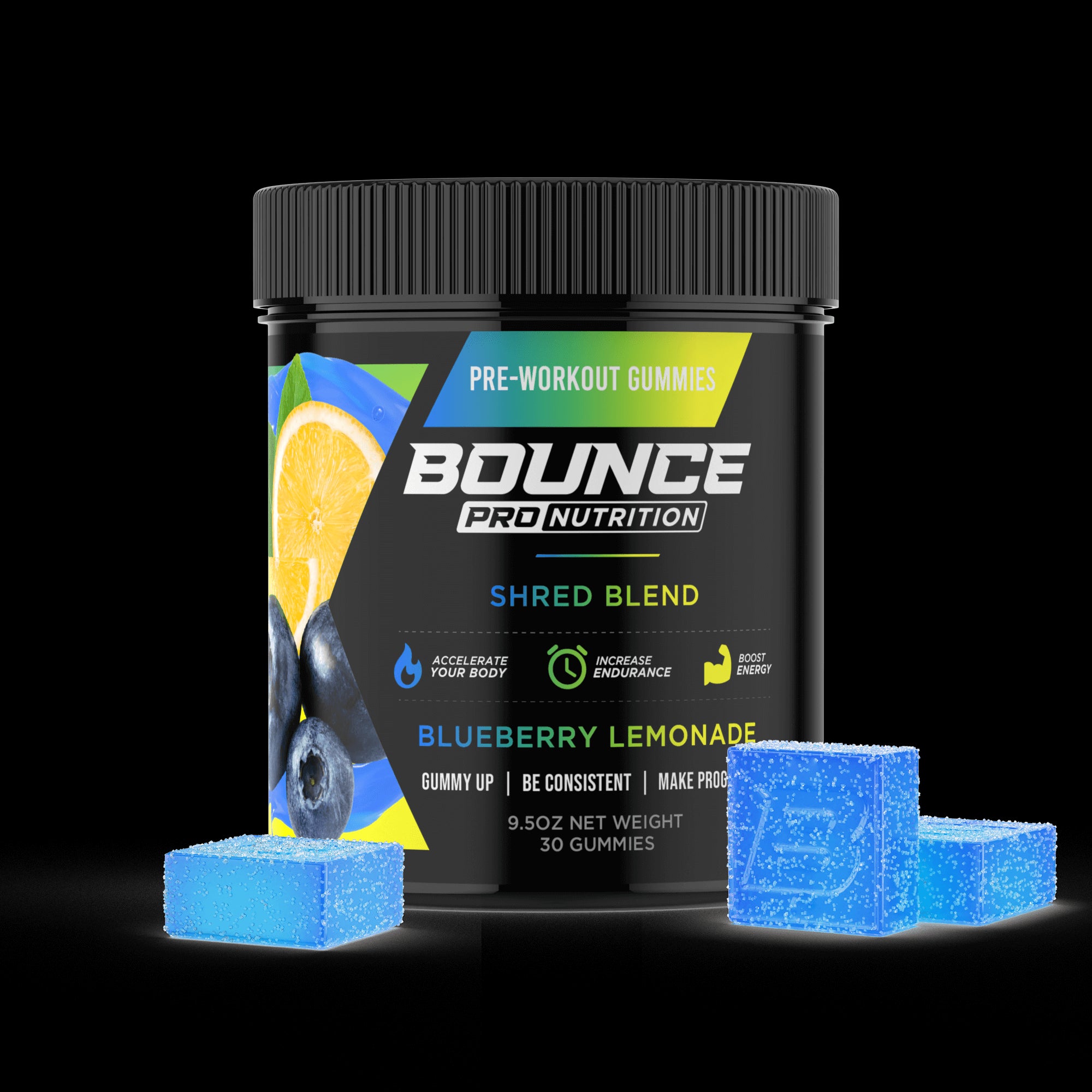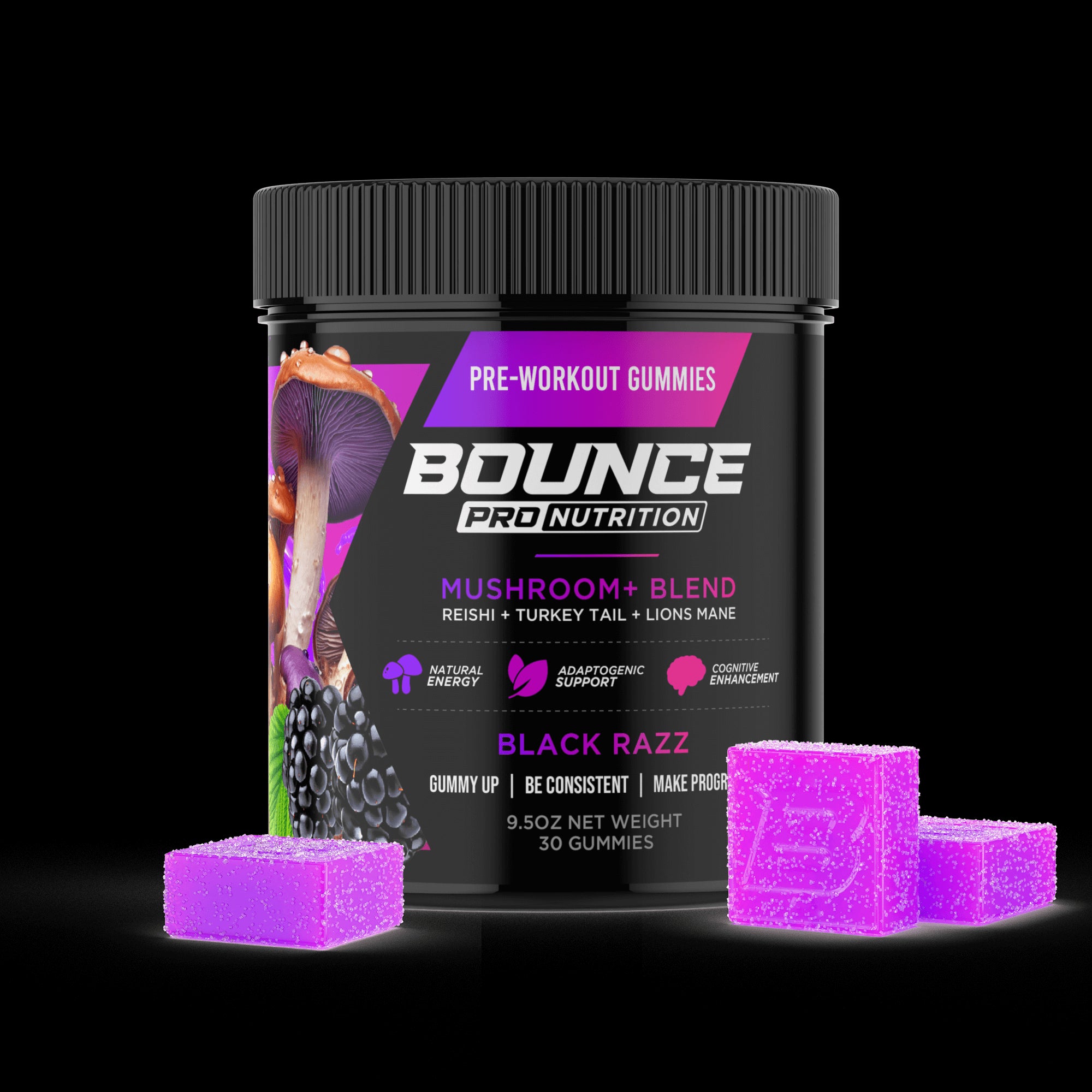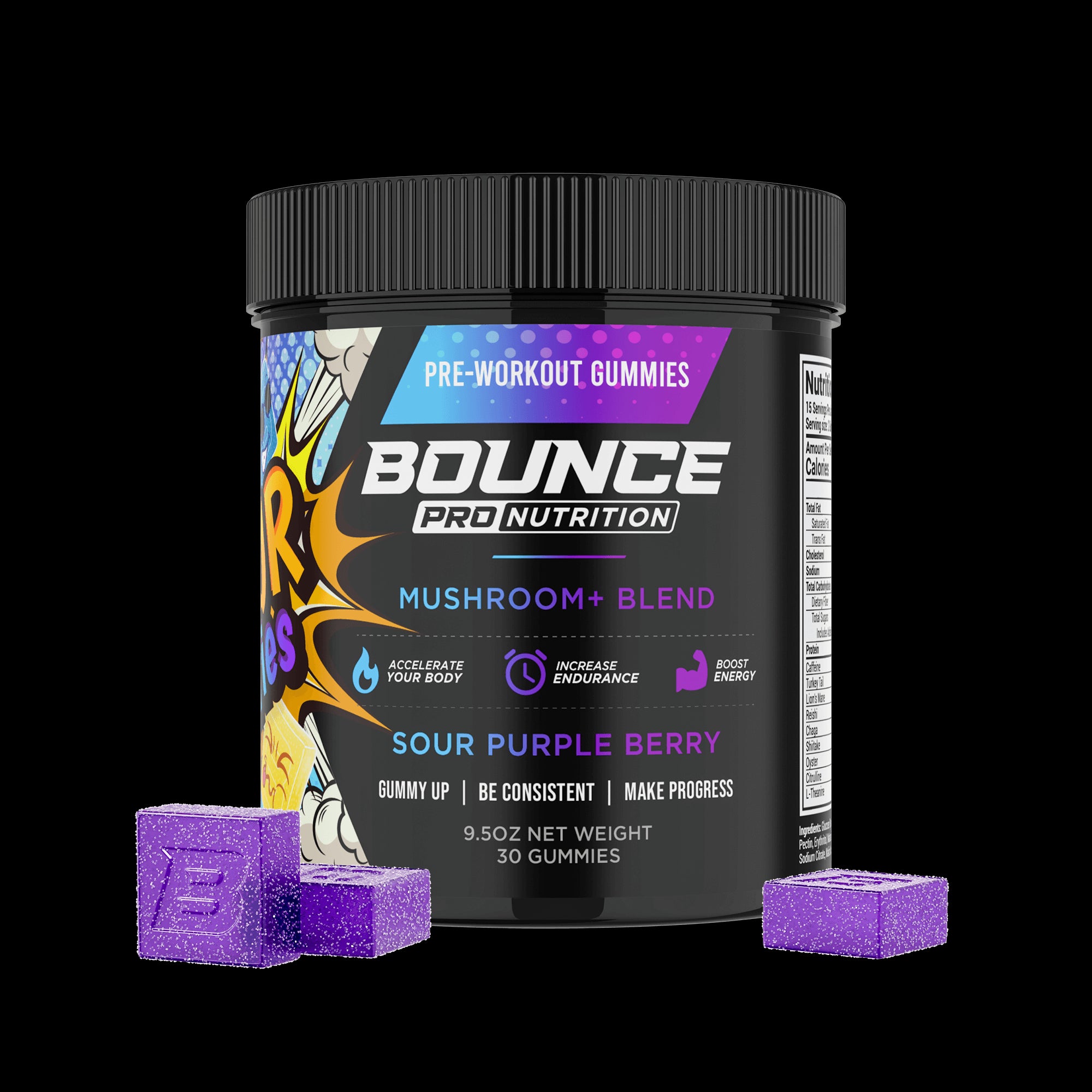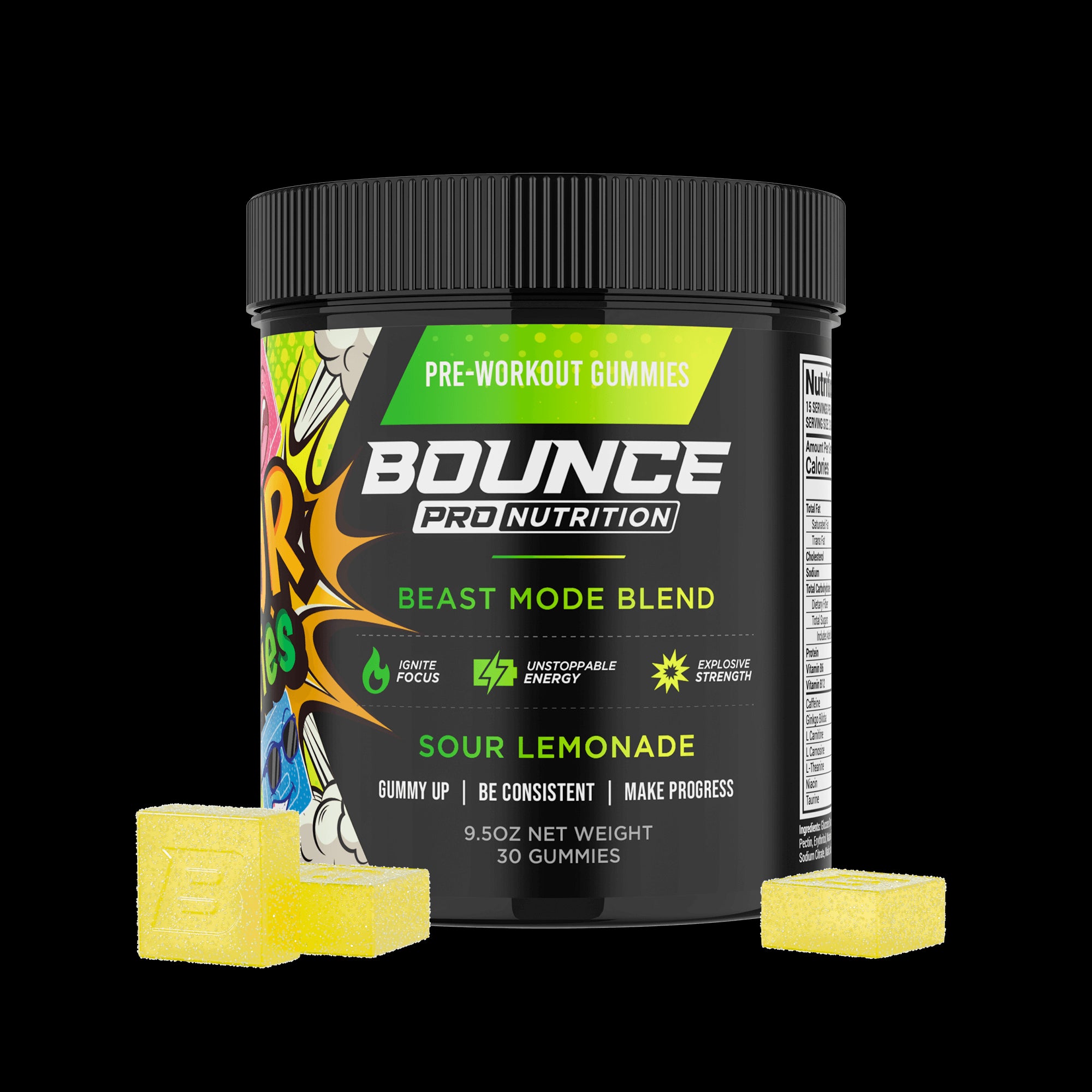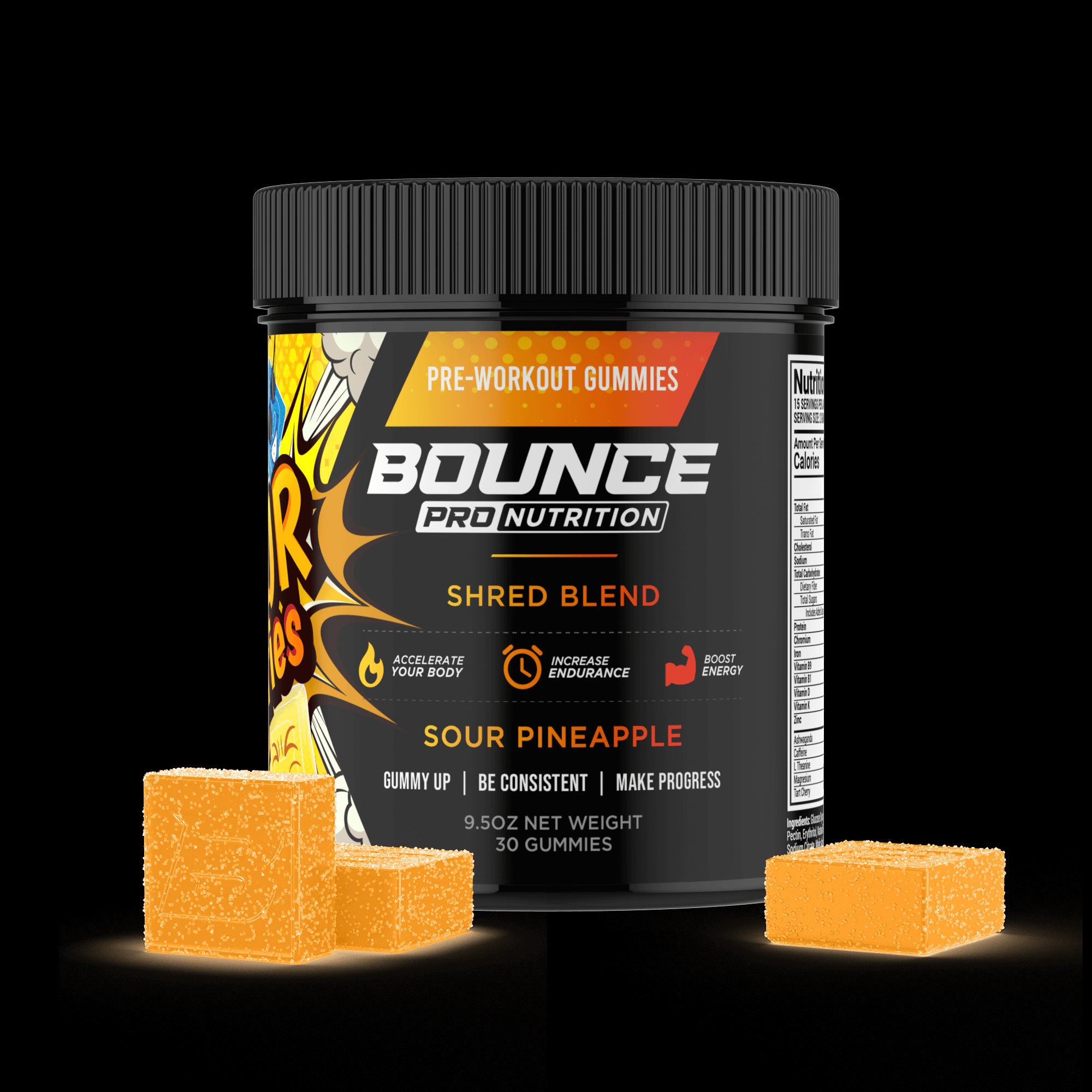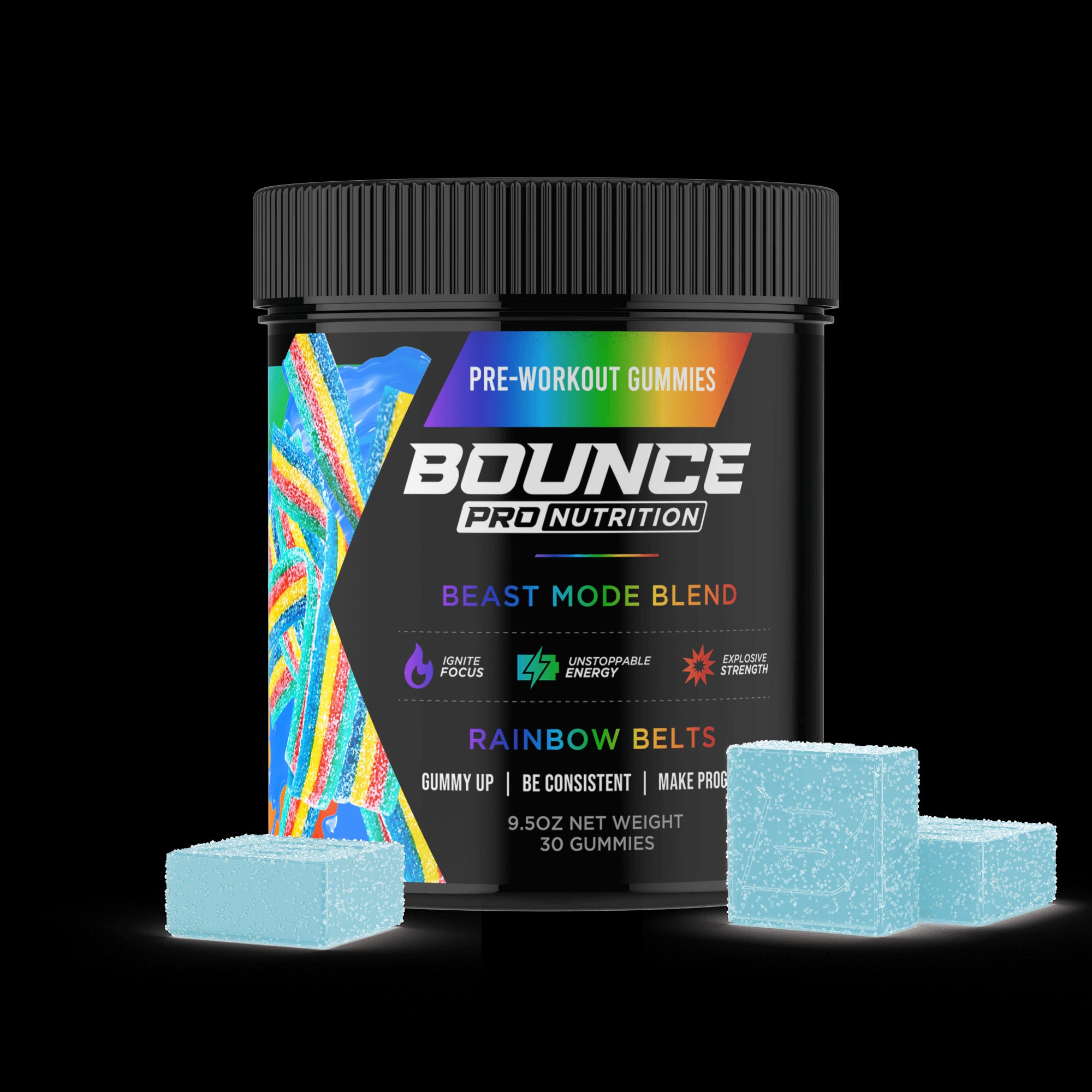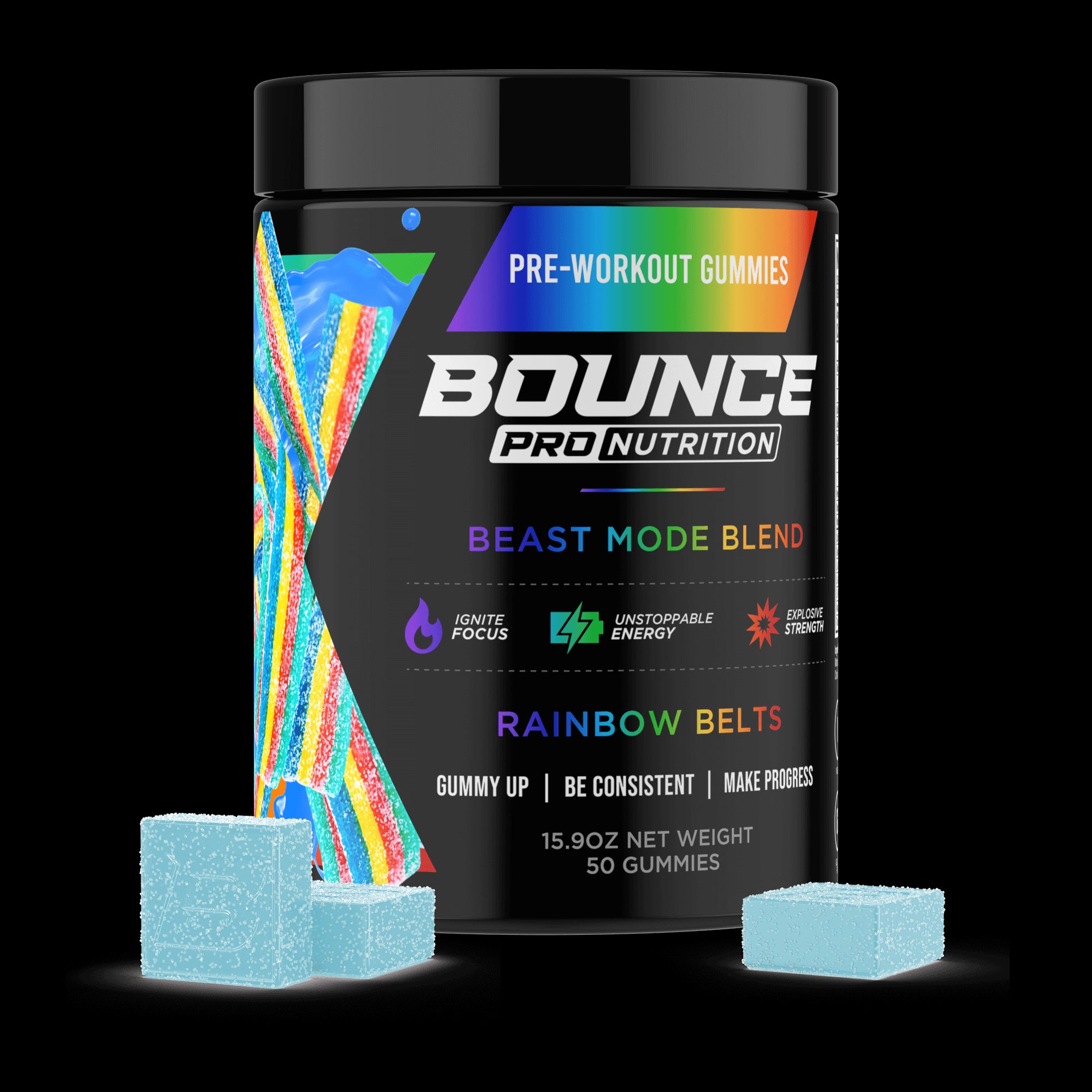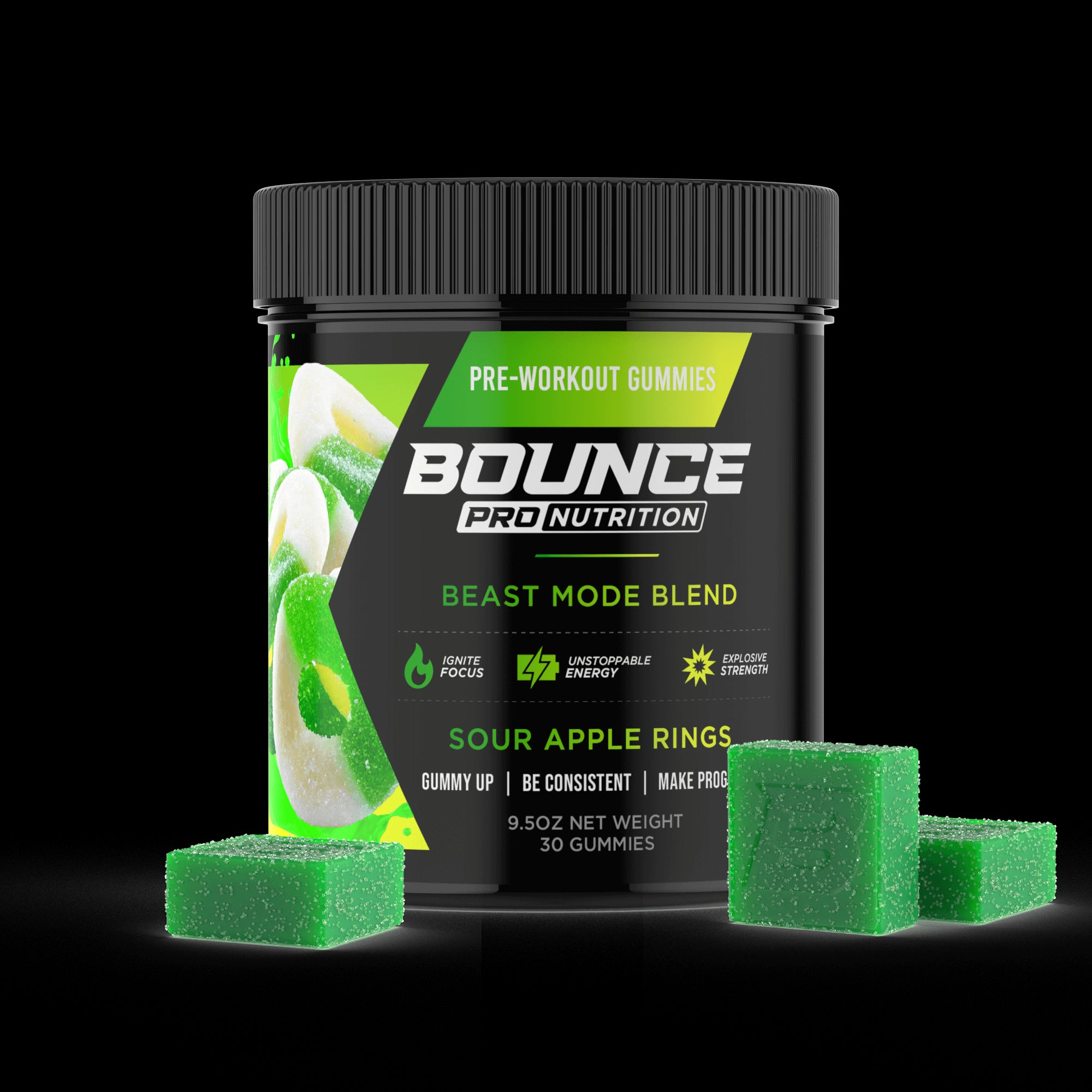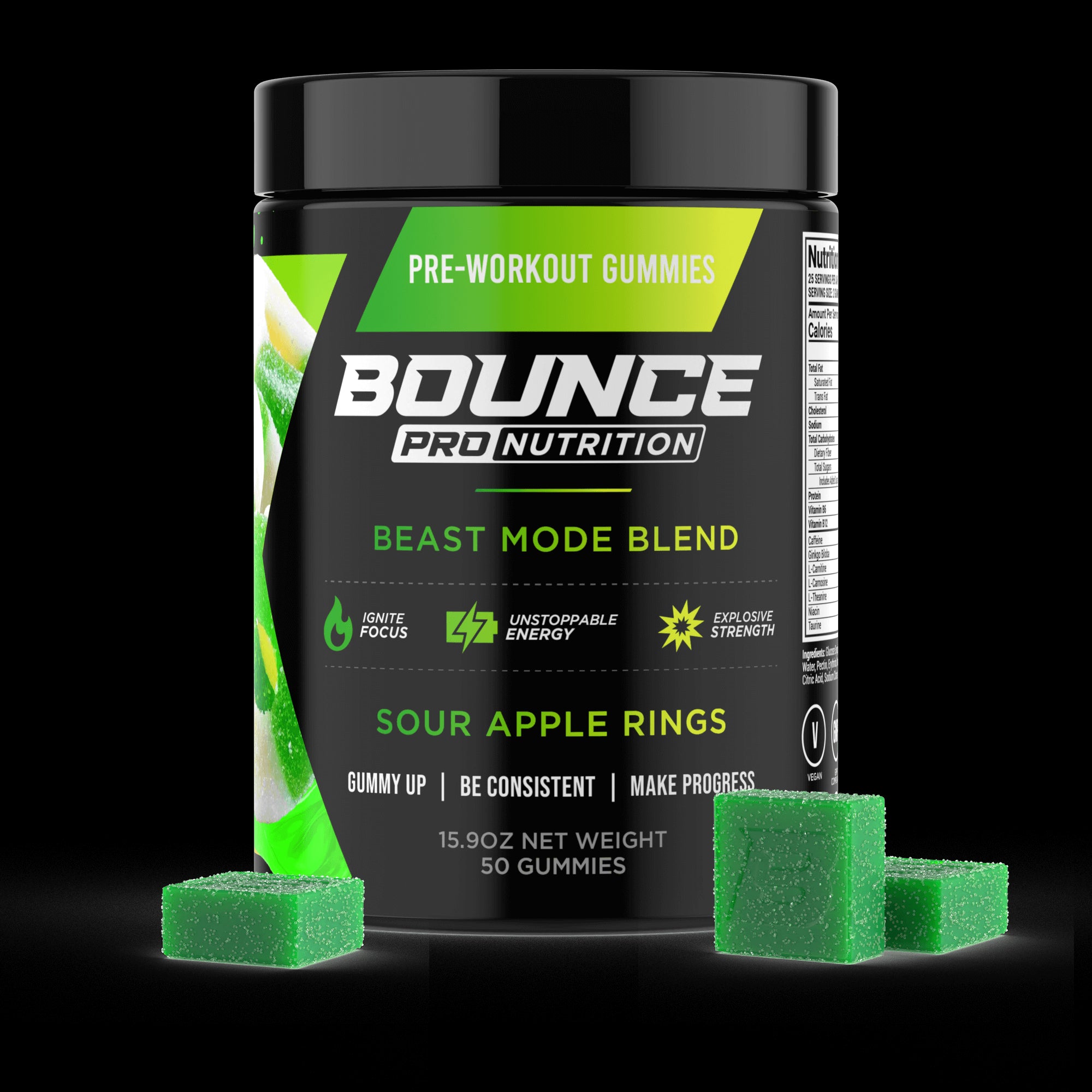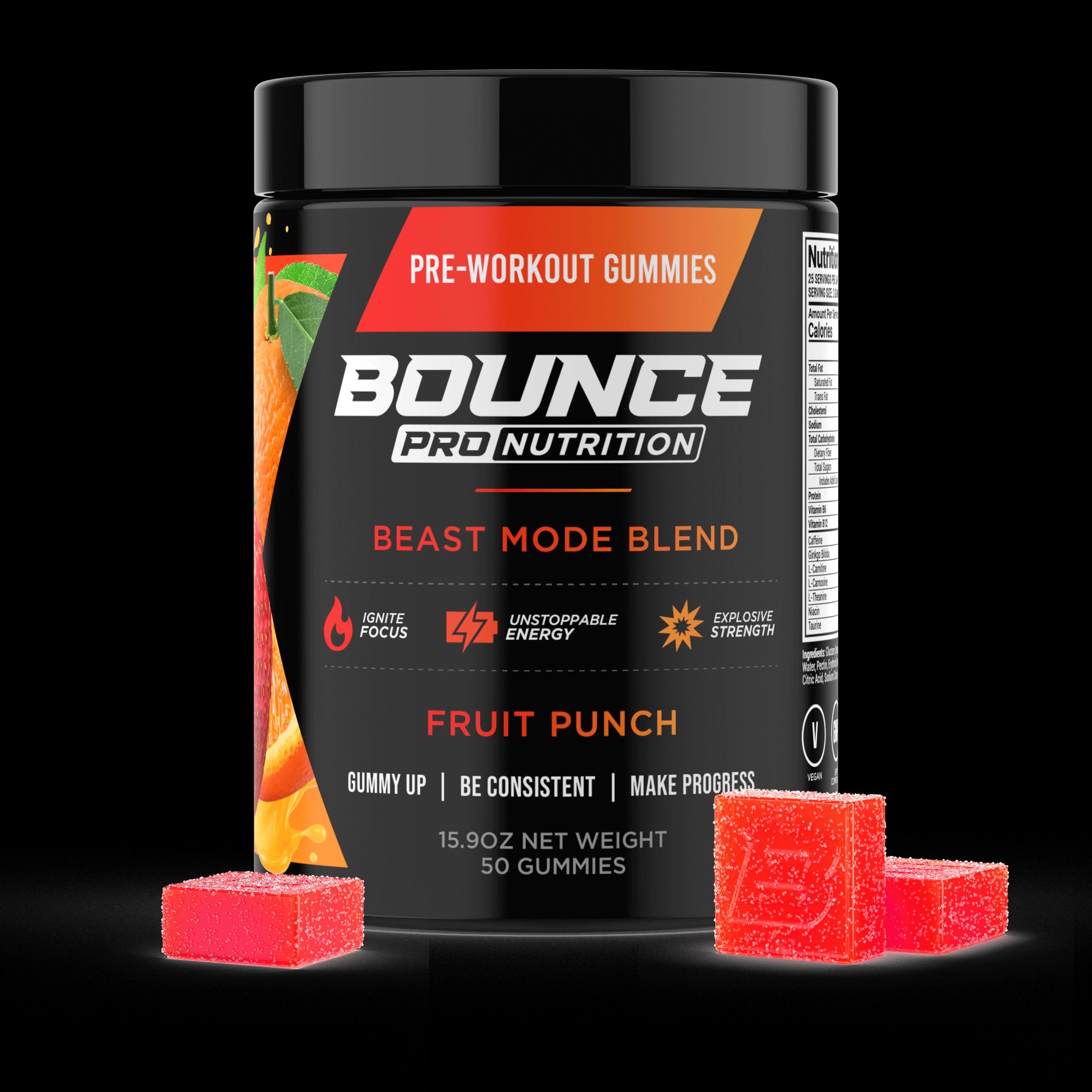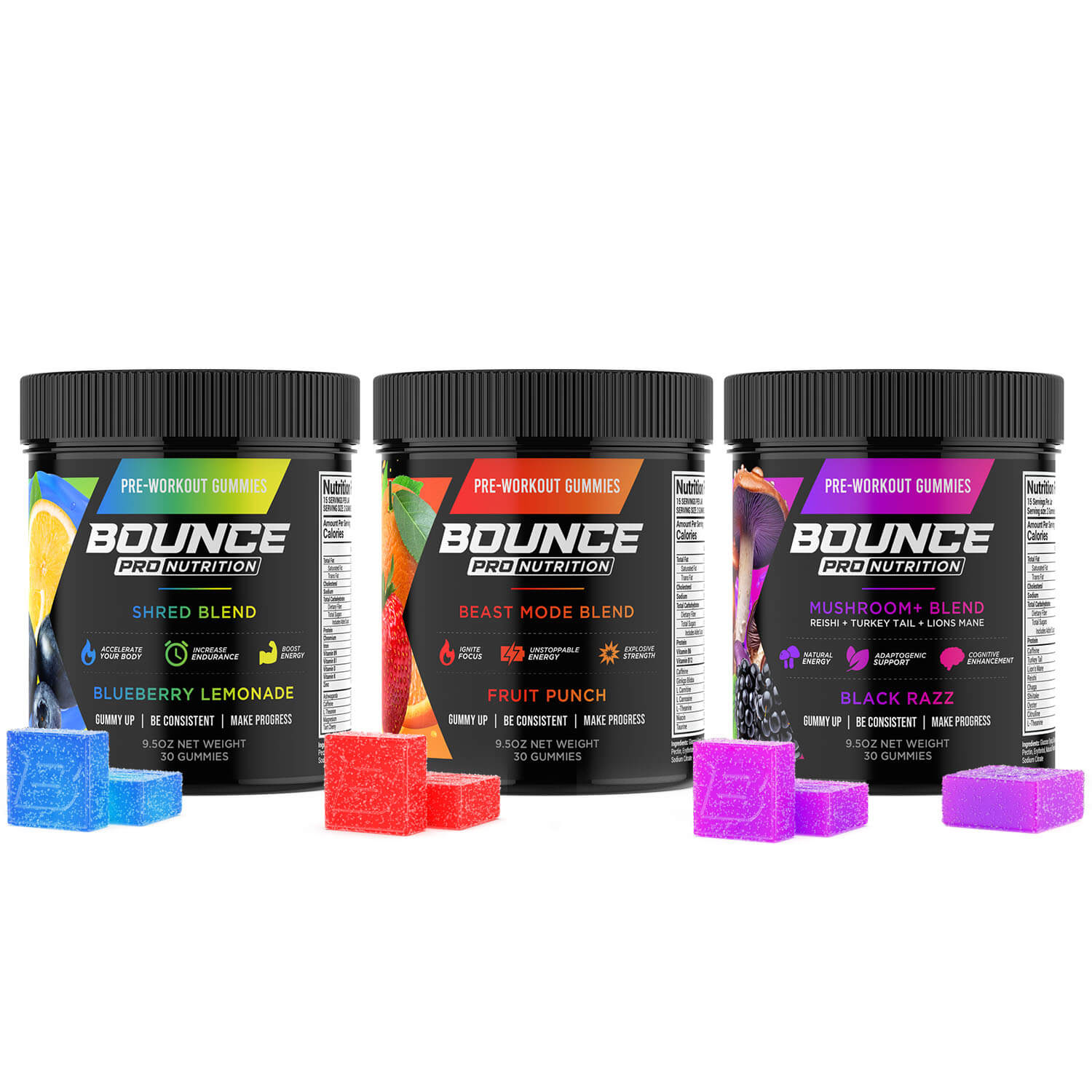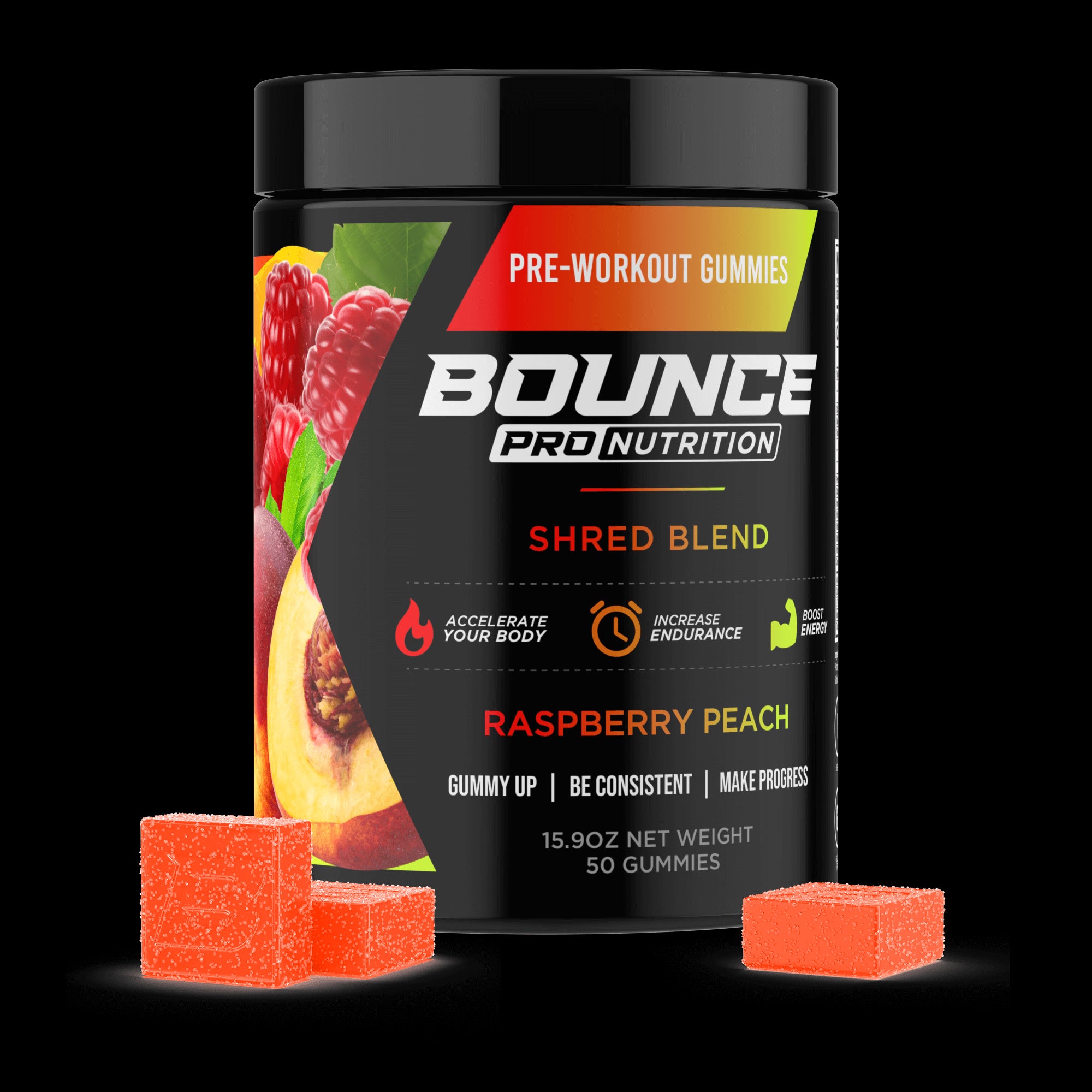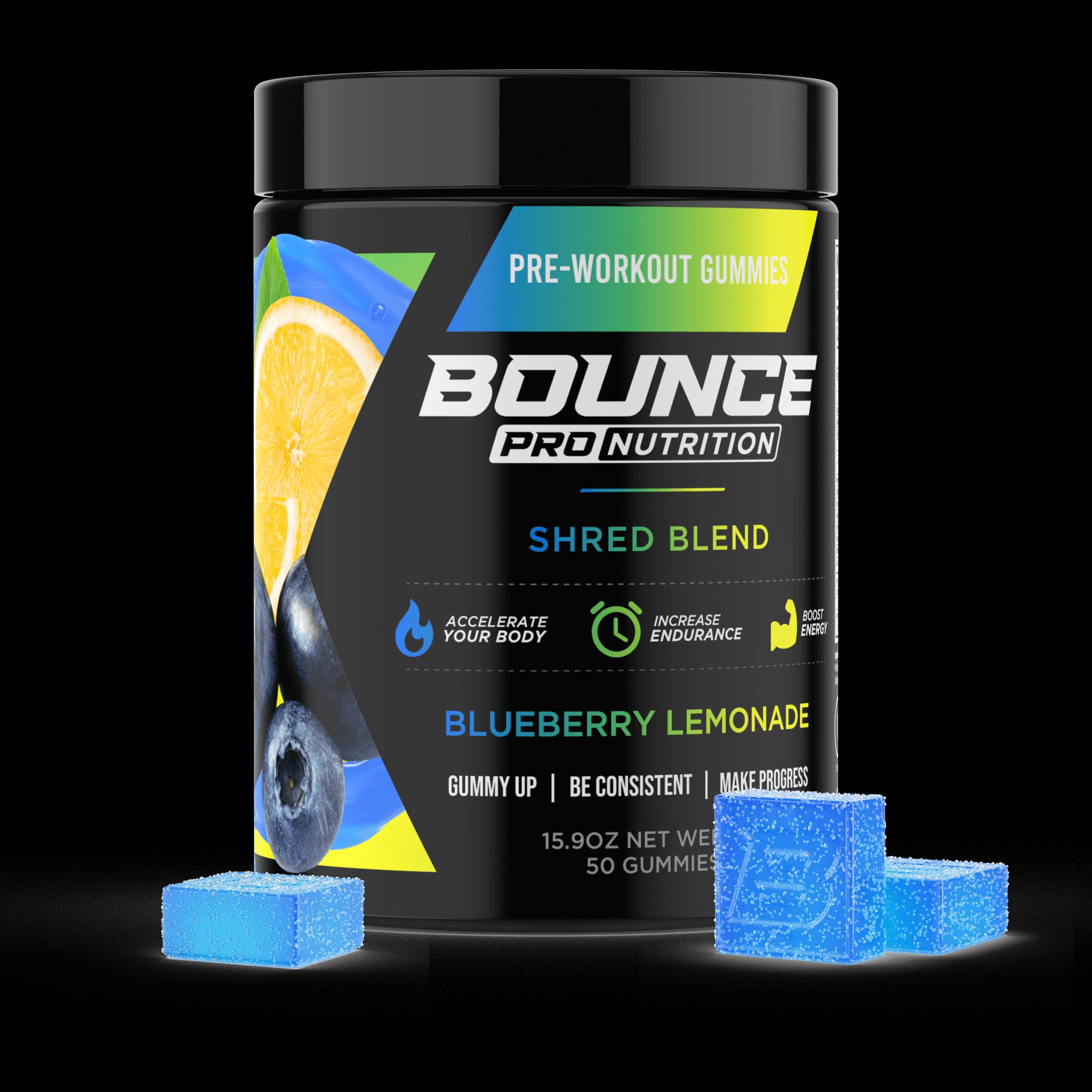There’s a unique and private conversation that happens deep within a long run, a silent dialogue between the will to continue and the body’s mounting protest. It’s a space where the rhythmic cadence of your feet on the pavement becomes a meditative drumbeat, and the world narrows to the next breath, the next stride, the next landmark on the horizon.
For anyone who has dedicated themselves to the simple yet profound act of running, this internal landscape is familiar territory. It is in this space that we chase our goals, whether it's completing a first 5K or shaving precious seconds off a marathon time. The pursuit of a personal best is a quest for precision, an understanding that progress is built upon the accumulation of a thousand small, correct decisions in training, recovery, and nutrition.
In this intricate equation of performance, we often focus on the big variables like weekly mileage and interval splits, yet the key to unlocking that next level of achievement might just lie in a detail we've overlooked: the delicate, mission-critical balance of hydration and the essential minerals that power every single muscle contraction.
TO BUY ELECTROLYTE GUMMIES CLICK HERE
Why is Running a Crucial Part of Exercising and Staying Healthy?
Running, in its purest form, is one of the most fundamental and accessible forms of human movement, and its role as a cornerstone of exercise and health is both profound and scientifically validated. At the very top of its extensive list of benefits is its impact on cardiovascular health. The act of running is a powerful workout for the heart, which is itself a muscle. Consistent running forces the heart to pump more blood more efficiently, leading to adaptations that strengthen the heart muscle, reduce resting heart rate, and improve stroke volume (the amount of blood pumped with each beat).
This enhanced efficiency lowers blood pressure and improves circulation throughout the entire body. Furthermore, regular aerobic exercise like running has been consistently shown to improve cholesterol profiles by increasing levels of high-density lipoprotein (HDL), the "good" cholesterol, while helping to lower levels of low-density lipoprotein (LDL), the "bad" cholesterol. These combined effects make running one of the most potent non-pharmacological tools for reducing the risk of heart disease, stroke, and other cardiovascular ailments.
Beyond the heart, running is an exceptionally effective modality for weight management and the promotion of a healthy body composition. It is a high-impact, full-body activity that expends a significant number of calories in a relatively short amount of time, making it a valuable tool for individuals looking to create the caloric deficit necessary for weight loss.
The benefits, however, go beyond just the calories burned during the run itself. Regular running can boost one's metabolic rate, and the stress of the activity can stimulate hormonal responses that are favorable for fat metabolism. It also helps to improve insulin sensitivity, which means the body's cells are better able to use blood glucose for energy, reducing the likelihood that excess sugar is stored as fat. For many, running becomes a sustainable and empowering way to not only lose weight but to maintain a healthy weight for life, fostering a positive relationship with one's body based on its capabilities rather than just its appearance.
The psychological and mental health benefits of running are arguably as powerful as the physiological ones. The phenomenon often referred to as the "runner's high" is a genuine neurobiological event, characterized by a flood of endorphins and, as more recent research suggests, endocannabinoids, which are the body's natural versions of the compounds found in cannabis.
These neurochemicals have powerful mood-boosting, anxiety-reducing, and pain-relieving effects, leading to feelings of euphoria and calm. Beyond this chemical boost, the rhythmic, repetitive nature of running can induce a meditative state, providing a powerful outlet for stress reduction and mental clarity. It offers a dedicated time to disconnect from the constant digital chatter of modern life, process thoughts, or simply be present in the moment, making it an invaluable tool for managing stress, combating symptoms of depression, and improving overall mental well-being.
While often considered a high-impact activity, when done progressively and with proper form, running can be highly beneficial for skeletal health. The principle of Wolff's Law states that bones will adapt to the loads under which they are placed. The impact forces generated during running send a signal to the body to reinforce the skeletal structure. Specialized bone cells called osteoblasts are stimulated to lay down new bone tissue, which increases bone mineral density. This is particularly important for the bones of the legs, hips, and spine.
A lifetime of consistent, sensible running can be a powerful defense against the age-related decline in bone density known as osteopenia and its more severe form, osteoporosis. This makes the skeleton more resilient and less susceptible to fractures, contributing significantly to long-term health and functional independence as one ages.
One of the most compelling attributes of running as a form of exercise is its profound accessibility and low barrier to entry. Unlike many other sports or fitness activities that require expensive equipment, specialized facilities, or paid memberships, the basic requirements for running are incredibly minimal: a decent pair of shoes and a safe place to move.
It can be done almost anywhere—on city streets, suburban sidewalks, park paths, or rugged mountain trails. It does not require a partner or a team, making it a perfect activity for those with unpredictable schedules or who prefer solitary pursuits. This inherent simplicity means that people from nearly all socioeconomic backgrounds and geographic locations can adopt running as their primary form of exercise, making it one of the most democratic and inclusive pathways to achieving and maintaining physical fitness and health.
Ultimately, the cumulative benefits of running contribute to one of the most sought-after goals of all: a longer and healthier life. Large-scale epidemiological studies have consistently found strong correlations between regular running and increased longevity. By dramatically reducing the risk of a wide range of chronic diseases—including cardiovascular disease, Type 2 diabetes, and certain types of cancer—running directly addresses many of the primary causes of premature mortality in the modern world.
More than just adding years to one's life, however, it adds life to one's years. By preserving cardiovascular function, maintaining a healthy weight, strengthening bones, and supporting mental health, running helps to extend an individual's "healthspan"—the period of life spent in good health, free from the chronic diseases and disabilities of aging. It is a powerful investment in a future filled with vitality, capability, and independence.
Why Do Most People Enjoy Running?
The relationship between a person and the act of running is often a complex one, frequently beginning with reluctance and discomfort before blossoming into a deeply cherished and indispensable part of life. For the millions who count themselves as dedicated runners, the enjoyment derived from the sport is multifaceted, weaving together profound physiological rewards, psychological release, and a unique sense of personal achievement. It is a journey that transforms an act of physical exertion into a source of joy, a form of therapy, and a method of self-discovery.
The reasons people fall in love with running are as varied as the paths they choose to run on, yet they often tap into universal human desires for progress, freedom, and connection. At its core, the enjoyment of running is often rooted in its simplicity and the tangible sense of progress it provides. In a world filled with complex and often ambiguous goals, the process of improving as a runner is remarkably clear and measurable. You can track your distance, your pace, your time, and see concrete evidence of your hard work paying off. This creates a powerful and motivating feedback loop.
The feeling of completing a distance you once thought impossible, or hitting a time you have been chasing for months, simply provides a potent and deeply personal sense of accomplishment that can boost confidence and self-esteem in all areas of life. It teaches a fundamental lesson: with consistency and dedication, you can overcome challenges and achieve difficult things.
For many runners, a significant part of the joy comes from the physiological and neurological responses the act itself produces. The famed "runner's high" is a very real and powerful experience. The release of endorphins and endocannabinoids during sustained aerobic exercise creates a natural analgesic and euphoric effect, reducing the perception of pain and elevating one's mood. Many runners find this state to be a powerful antidote to stress and anxiety.
The physical act of running also offers a form of meditative release. The steady rhythm of breath and footfalls allows the mind to quiet down, providing a space to process thoughts, solve problems, or simply disconnect from daily worries and be fully present in the moment. The following are some of the most common reasons people cite for their love of the sport:
-
The Pursuit and Achievement of Personal Goals: Running is a sport that is perfectly suited for personal goal setting. Whether the goal is to finish a first 5K without walking, break the 4-hour barrier in a marathon, or simply run consistently three times a week, having a clear target provides purpose and direction to one's training. The journey of working towards that goal, with all its ups and downs, is rewarding in itself. The moment of actually achieving it, however, provides a profound sense of accomplishment and self-efficacy. This feeling of "I did it" is a powerful motivator that often inspires runners to set new, more ambitious goals, creating a lifelong cycle of positive reinforcement and personal growth.
-
Stress Relief and Mental Health Benefits: In our fast-paced and often high-stress world, running offers a powerful and accessible escape. The physical exertion provides a healthy outlet for pent-up frustration and anxiety. As mentioned, the neurochemical cocktail released during a run has potent mood-boosting and anti-anxiety effects. Many runners describe their daily run as their "me time" or their form of therapy—a protected space where they can clear their head, process the day's events, and return with a renewed sense of calm and perspective. The singular focus required for a hard run can be a form of mindfulness, forcing you to be present in your body and quieting the incessant chatter of the mind.
-
Connection with Nature and the Outdoors: While treadmills offer convenience, a vast number of runners cherish the opportunity to take their sport outdoors. Running provides a unique and intimate way to explore one's surroundings, whether it's a bustling city park, a quiet suburban neighborhood, or a rugged mountain trail. Being outside provides a multisensory experience—the feeling of the sun and wind, the changing seasons, the sounds of nature—that can be incredibly grounding and restorative. For trail runners, in particular, the enjoyment comes from navigating challenging terrain and experiencing the beauty and solitude of wild places, adding a sense of adventure to their workout.
-
A Sense of Freedom and Autonomy: At its heart, running is an act of freedom. It requires no special facility, no team, and very little equipment. You can simply lace up your shoes and go, exploring the world under your own power. This sense of autonomy is empowering. You choose the route, you set the pace, and you decide how far you will go. In a life that is often highly scheduled and constrained by responsibilities, the simplicity and freedom of a run can feel like a small act of rebellion and self-determination. It is a personal journey where you are in complete control of the effort and the outcome.
-
The Social Community and Shared Experience: While running can be a solitary pursuit, it also boasts a vibrant and incredibly supportive community. Joining a local running club, participating in group runs, or simply showing up on race day connects you with like-minded individuals who understand the challenges and joys of the sport. This shared experience creates a powerful sense of camaraderie and belonging. Training with a group can provide motivation, accountability, and lifelong friendships. The energy of a large race, with thousands of people all striving together, is an electric and unifying experience that many runners find deeply enjoyable and inspiring.
So, What Does it Mean and Take to Be a Good Runner?
The definition of a "good runner" is wonderfully subjective and personal, and it certainly isn't confined to those who stand atop podiums or post blazing-fast times. A good runner can be the person who consistently gets out for their 30-minute run three times a week just as much as it can be the elite marathoner. At its core, being a good runner means having a healthy, sustainable, and intelligent relationship with the sport.
It's about understanding and respecting your own body, training with purpose and patience rather than just brute force, and thus, finding a way to integrate running into your life in a way that brings you joy and long-term health benefits, not just constant fatigue and injury. Ultimately, becoming a good runner is a journey of self-awareness and learning. It involves moving beyond the simple act of putting one foot in front of the other and embracing the principles that govern progress and longevity in the sport. It's about learning to listen to the subtle signals your body sends—the difference between the normal discomfort of a hard workout and the early warning signs of an injury.
It means understanding that rest and recovery are not signs of weakness but are co-equal components of the training process itself. A good runner is a smart runner, one who invests as much time in learning about proper training, nutrition, and recovery as they do in logging miles. So, here’s what you need to know:
-
Consistency is King: This is the single most important attribute of any successful runner. The physiological adaptations that lead to improvement—a stronger heart, increased capillary density, more efficient mitochondria—are not built in a few heroic, all-out efforts. They are the cumulative result of showing up consistently, week after week, month after month. A good runner understands that it is far more beneficial to run a moderate amount consistently than it is to run excessively for one week and then be too tired or injured to run for the next two. They build a routine and stick to it, creating a robust aerobic base that serves as the foundation for all other performance gains.
-
Structured and Purposeful Training: A good runner doesn't just "go for a run"; they train with purpose. They understand that not every run should be hard. A well-structured training plan, even a simple one, will incorporate a variety of different types of runs, each with a specific goal. This typically includes easy runs for recovery and base-building, long runs to improve endurance and fuel efficiency, and some form of faster running, like tempo runs or intervals, to increase lactate threshold and top-end speed. This variation provides the right stimuli for different physiological systems and prevents the burnout and plateaus that come from running the same pace and distance every single day.
-
The Ability to Listen to Your Body: This is a skill that separates seasoned runners from novices. A good runner learns to differentiate between the productive pain of a challenging workout and the sharp, specific pain that signals an impending injury. They are not a slave to their training plan; they have the wisdom and confidence to adjust it based on how they feel. They know when to back off, take an extra rest day, or cross-train if they feel a niggle or are overly fatigued. This proactive approach to self-management is the key to avoiding the cycle of overtraining and injury that derails so many running careers.
-
Mental Toughness and Patience: Running is as much a mental sport as it is a physical one. A good runner cultivates mental toughness to push through the inevitable discomfort of a hard race or workout. They develop strategies for managing negative self-talk and staying focused when fatigue sets in. Equally important, they cultivate patience. They understand that progress in running is rarely linear and that it takes a long time to achieve significant goals. They are able to weather the plateaus and setbacks without becoming discouraged, trusting in the long-term process of consistent, intelligent work.
-
A Commitment to the "Other 23 Hours": A good runner knows that the 30-60 minutes they spend running each day is only a small part of the equation. They understand that their progress is profoundly influenced by how they manage the other 23 hours. This means prioritizing sleep as the number one recovery tool. It means fueling their body with a nutritious, whole-foods-based diet to support their training and repair. It involves proactive recovery strategies like stretching, foam rolling, and mobility work. They see themselves as a runner all the time, not just when their running shoes are on.
-
Proper Gear and Equipment: While running has a low barrier to entry, a good runner understands the importance of investing in the right equipment, with the most critical item being their shoes. They take the time to get properly fitted for running shoes that match their foot type and gait, understanding that the right shoes can significantly reduce the risk of common running injuries. Beyond shoes, they dress appropriately for the weather to stay safe and comfortable, and as they progress, they may invest in other tools like a GPS watch to track their training or a hydration vest for long runs, seeing gear not as a fashion statement but as a functional tool to support their habit.
What Types of Runners are There?
The running community is a vast and wonderfully diverse ecosystem, populated by individuals with a wide range of goals, motivations, abilities, and styles. While the fundamental act of running is the same for everyone, the way it is expressed can vary dramatically. To say someone is a "runner" is only the beginning of the story. Are they focused on explosive speed over a short distance, or do they find their rhythm over the course of many miles?
Do they run for the solitude of a quiet trail, the roar of a crowded starting line, or the simple joy of a social jog with friends? Understanding these different classifications helps to appreciate the rich tapestry of the sport and allows individuals to find their own tribe and their own unique place within it. These classifications are not rigid boxes; many runners will fit into multiple categories or will transition between them at different points in their life. A casual runner might decide to get competitive for a season, and a road marathoner might fall in love with trail running.
However, looking at runners through these different lenses—their focus, their frequency, their physical attributes, and their biomechanical style—provides a useful framework for understanding the nuances that define each runner's personal journey. It highlights that there is no single "right" way to be a runner, only the way that is right for you, your body, and your goals. The following sections explore some of the most common ways to categorize the members of this diverse community.
Focus/Style
The most fundamental way to classify runners is by their primary focus and the style of running they gravitate towards. This is often dictated by a combination of natural talent, personal preference, and the specific goals they are pursuing. This classification speaks to the very essence of why and how a person runs, determining the nature of their training, the distances they cover, and the type of events they are likely to participate in:
-
Speedsters/Sprinters: These athletes are built for pure, explosive, anaerobic power. Their domain is the track, and their events are short, lasting from a few seconds to a minute at most. This includes the 100m, 200m, and 400m dashes. Their training is almost entirely focused on developing maximal force production and speed. This involves heavy lifting in the weight room to build strength, extensive plyometric work to improve explosive power, and countless hours on the track honing their start, acceleration mechanics, and top-end speed through short, maximal-effort intervals with long recovery periods. Theirs is a world of power, technique, and raw velocity.
-
Endurance Monsters/Distance Runners: This is perhaps the largest and most varied category, encompassing anyone who specializes in running long distances. Their focus is on aerobic fitness, muscular endurance, and fuel efficiency. This group includes 5K and 10K road racers, half-marathoners, marathoners, and the even more extreme ultra-marathoners who tackle distances of 50km, 50 miles, 100 miles, or even more. Their training is characterized by high weekly mileage, centered around a weekly long, slow distance (LSD) run to build endurance. This is supplemented with other key workouts like tempo runs and long intervals to improve their lactate threshold and stamina at race pace. Their world is one of pacing, patience, and mental fortitude.
-
Trail Runners: Trail runners trade the predictable surface of pavement or track for the rugged, unpredictable, and often beautiful terrain of nature. Their focus is less on pure pace and more on strength, agility, and self-sufficiency. Trail running requires constant adaptation to changing surfaces like dirt, mud, rocks, and roots, which demands incredible ankle stability, proprioception, and concentration. Training often involves significant elevation gain, building powerful leg and glute strength for climbing and eccentric strength for controlling descents. Trail runners typically carry their own hydration and fuel in vests or packs and are drawn to the solitude, adventure, and connection with the outdoors that their style of running provides.
-
Track Runners (Middle Distance): Occupying the space between the pure sprinters and the long-distance road runners are the middle-distance track specialists. Their events, primarily the 800m and 1500m (the "metric mile"), are a brutal test of both speed and endurance. These athletes must possess the raw speed of a sprinter but also the aerobic capacity to sustain a near-sprint pace for several minutes. Their training is a demanding blend of high-intensity interval work on the track to develop speed and race-specific endurance, supplemented with tempo runs and some higher mileage to build their aerobic base. They are masters of pacing and tactics, often running in a pack and relying on a powerful finishing "kick" in the final lap.
-
Obstacle Course Racers (OCR): This growing category of runner combines distance running with a series of physically demanding obstacles. Athletes in events like the Spartan Race or Tough Mudder are true combo runners. They need the endurance to run several miles, often over challenging trail-like terrain, but they also need the functional, full-body strength to climb walls, carry heavy objects, crawl under barbed wire, and swing across monkey bars. Their training is therefore incredibly varied, blending trail running with circuit training, Crossfit-style workouts, and specific obstacle practice to build the unique combination of grit, strength, and stamina required to succeed.
Frequency & Intensity
Another way to understand the running community is to classify individuals based on their level of commitment, which is often reflected in the frequency and intensity of their training. This spectrum ranges from the person who runs occasionally for general health to the individual whose entire life is structured around their training and racing schedule. This classification is less about ability and more about the role that running plays in a person's life and identity:
-
The Novice Runner: This is where every runner begins their journey. The novice is new to the sport and is primarily focused on the basics: building a consistent habit, learning to pace themselves, and gradually increasing their distance without getting injured. Their frequency is typically 2-3 times per week, and their intensity is low to moderate as they build their aerobic base. Their main goal is often simply to complete a certain distance, like their first 5K, and their journey is one of discovery and building foundational fitness.
-
The Casual/Recreational Runner: This is a huge segment of the running population. The casual runner enjoys the sport for its general health and mental wellness benefits but does not follow a strict training plan or have specific competitive goals. They might run a few times a week as their schedule allows, choosing their route and distance based on how they feel that day. They may occasionally participate in a local fun run, but their primary motivation is enjoyment, stress relief, and staying active, not chasing personal bests.
-
The Social Competitive Runner: This runner thrives on the community and energy of the sport. They are often members of a local running club and their weekly schedule may include several group runs. While they are competitive and do train to improve their race times, the social aspect is a primary driver of their enjoyment. They look forward to the camaraderie of training with friends and the shared experience of traveling to and participating in races together. For them, the finish line celebration with their running buddies is just as important as the time on the clock.
-
The Individual Competitive Runner: This athlete is deeply driven by personal achievement and the pursuit of new personal bests (PBs or PRs). While they may enjoy the running community, their training is highly structured, purposeful, and often solitary. They follow a specific training plan, meticulously track their data (pace, heart rate, mileage), and are highly attuned to their nutrition and recovery. Their goal is to maximize their own potential, and they derive immense satisfaction from seeing their hard work translate into faster race times. They are in a constant competition with the person they were yesterday.
-
The Devoted/Lifestyle Runner: For this individual, running is not just a hobby; it is a fundamental part of their identity and lifestyle. They are often high-mileage runners who train 5-7 days a week, in all weather conditions. Their social circles may revolve around running, their vacations may be planned around destination marathons, and their daily schedule is structured to accommodate their training needs. They have a deep, almost spiritual connection to the sport and find that it brings structure, purpose, and meaning to their life beyond just the physical benefits.
-
The Early Morning Runner vs. The Nighttime Runner: Within these categories, runners often fall into distinct temporal tribes based on when they can fit running into their day. The early morning runner, or "dawn patroller," loves the peace and quiet of the pre-dawn hours. They enjoy starting their day with a sense of accomplishment and find that it energizes them for the hours ahead. The nighttime runner, on the other hand, uses their run to decompress and shed the stress of the workday. They may find the cooler evening temperatures more comfortable and enjoy the different perspective of their surroundings after dark. Both are masters of discipline, carving out time for their passion at the edges of the day.
Body Type & Physique
This classification is the most sensitive and requires a nuanced understanding of biomechanics and physiology, moving away from subjective aesthetic judgments. While it is true that any body type can be a runner, it is also true that certain physical characteristics can lend themselves to greater efficiency and success in different types of running. These are generalities, not rules, and they are based on the principles of physics and how different body structures handle the forces of running:
-
The Ectomorphic/Linear Build (Classic Distance Runner): When you picture an elite marathoner, you typically envision a person with a light, linear build—long, slender limbs and a lower percentage of body and muscle mass. This body type is biomechanically efficient for distance running. Less mass means less weight to carry with every stride, which reduces the energy cost of running over long distances. The longer limbs can allow for a longer, more efficient stride. This physique is not "better," but it is highly specialized and adapted for the specific demand of elite-level endurance performance.
-
The Mesomorphic/Muscular Build (Sprinter/Power Runner): In contrast, the elite sprinter possesses a highly muscular and powerful physique. Their goal is not energy efficiency over distance, but maximal force production over a very short period. Their larger, more powerful muscles (particularly in the glutes, hamstrings, and quads) are capable of generating the explosive force needed for incredible acceleration and top-end speed. This body type is highly adapted for anaerobic, power-based events. Runners in sports like football or OCR might also fit this more muscular profile, as their sport demands strength and power in addition to running ability.
-
The Endomorphic/Softer Build (The Everyday Hero): This category represents a huge portion of the running community. Individuals with a naturally higher percentage of body fat or a larger frame may not fit the stereotypical image of a "runner," but they are out there logging miles every day. While carrying more mass can make running less efficient from a purely biomechanical standpoint, it does not preclude them from being strong, consistent, and successful runners. For these individuals, the health benefits of running—improved cardiovascular fitness, weight management, and mental well-being—are incredibly impactful. Their presence in the sport is a powerful testament to the fact that running is for every body.
-
The Importance of Individuality: It is crucial to reiterate that these are broad archetypes. There are countless exceptions, and a runner's success is far more dependent on their consistency, training, and mental fortitude than on their natural body type. A runner with a more muscular build can train to become an excellent marathoner, and a runner with a leaner build can dedicate themselves to strength training to improve their speed. The beauty of running is that the body is remarkably adaptable, and with dedication, any individual can mold themselves into a better, stronger version of the runner they are today, regardless of their starting physique.
Running Style
Beyond a runner's focus or body type, they can also be classified by their unique biomechanical signature—their running style or gait. How a runner's foot strikes the ground, how quickly they turn over their legs, and how they move through the air all contribute to their personal running form. This is an area of intense debate and research in the running world, with different styles having potential implications for both efficiency and injury risk:
-
The Heel Striker: This is the most common foot strike pattern among recreational runners. A heel striker makes initial contact with the ground with the rear part of their foot. This can sometimes lead to an "overstriding" pattern, where the foot lands significantly out in front of the body's center of mass, which creates a braking force with every step and can place increased stress on the knee joint. However, many efficient and injury-free runners are heel strikers, and a gentle heel strike is not inherently problematic.
-
The Midfoot Striker: A midfoot striker makes initial contact with the ground with the middle portion of their foot. This pattern is often considered to be a biomechanical "sweet spot" by many coaches, as it allows for a quick transition from landing to toe-off and tends to keep the foot landing more directly underneath the body's center of mass, reducing braking forces. It distributes impact forces more evenly across the foot and ankle, which may reduce stress on the knees.
-
The Forefoot Striker: This runner makes initial contact with the ball of their foot, with the heel either touching down lightly afterward or not at all. This style is common among sprinters and is often used by distance runners when running at very fast paces. Forefoot striking utilizes the natural spring-like mechanism of the calf and Achilles tendon to absorb impact and generate forward propulsion. While it can be very efficient and fast, it also places a significantly higher load on the calves, Achilles tendon, and metatarsals, requiring substantial lower leg strength and conditioning to perform without injury.
-
The High Cadence Runner (The "Shuffler"): Cadence refers to the number of steps a runner takes per minute (spm). A high cadence runner takes many quick, light steps, often with a shorter stride length. The commonly cited "ideal" number is around 180 spm, though this varies with height and pace. A higher cadence is often associated with reduced ground contact time and less vertical oscillation (bouncing), which can improve running economy. It also helps to prevent overstriding, as it's difficult to land far out in front of your body when your feet are turning over so quickly.
-
The Low Cadence Runner (The "Bounder"): This runner takes fewer, longer strides per minute. They often have more "air time" and a more pronounced vertical oscillation, or bounce, in their stride. While a long, powerful stride can be very fast, a cadence that is too low for a given pace can be a sign of overstriding, which is inefficient and can increase impact forces on the joints. Many runners find that consciously working to increase their cadence by a small amount (5-10%) can lead to significant improvements in their form and efficiency.
How Crucial is Staying Hydrated While Running?
For a runner, hydration is not simply about quenching thirst; it is a mission-critical component of performance, safety, and overall physiological function. Every single system in the body, from the contracting muscle fibers in your legs to the firing neurons in your brain, depends on a state of optimal fluid balance. When a runner begins to lose fluid through sweat at a rate faster than they are taking it in, a cascade of negative consequences is initiated that can rapidly degrade performance and, in extreme cases, become a serious health risk. Even a mild level of dehydration, defined as a loss of just 2% of one's body weight, can lead to a measurable decrease in performance. Understanding the profound and multifaceted importance of staying hydrated is therefore not just a minor detail for a runner; it is a foundational pillar of intelligent training and successful racing:
-
Thermoregulation and Heat Dissipation: This is arguably the most critical role of hydration during running. The act of running generates a tremendous amount of internal heat. The body's primary mechanism for getting rid of this heat and maintaining a safe core temperature is through sweating. As sweat evaporates from the skin, it has a powerful cooling effect. However, this process requires a constant supply of fluid. When you become dehydrated, your total blood volume decreases. To conserve the remaining fluid, the body will reduce its sweat rate and decrease blood flow to the skin. This severely compromises your ability to cool down, causing your core body temperature to rise, which dramatically increases the risk of heat exhaustion or, in severe cases, life-threatening heatstroke.
-
Maintaining Blood Volume and Cardiovascular Function: As you dehydrate and your blood plasma volume drops, your blood becomes thicker and more viscous. This makes it much harder for your heart to pump the blood to the working muscles and the skin. To compensate and still deliver the necessary oxygen to your muscles, your heart has to beat faster. This phenomenon is known as cardiovascular drift, where your heart rate will climb steadily even if you maintain the same running pace. This places a huge, unnecessary strain on your cardiovascular system, making the same effort feel much harder and forcing you to slow down. Proper hydration helps to maintain blood volume, keeping your heart working efficiently.
-
Supporting Muscle Function and Preventing Cramps: Muscles are approximately 75% water. Proper hydration is essential for them to function correctly. Water is the medium in which the electrochemical reactions that cause muscle contraction take place. Dehydration can disrupt the delicate balance of key electrolytes like sodium and potassium, which can impair the ability of nerves to send signals to the muscles and for the muscles to contract effectively. This can lead to feelings of weakness, premature fatigue, and an increased susceptibility to the painful, involuntary muscle contractions known as cramps, which can instantly derail a run or a race.
-
Enhancing Cognitive Performance and Focus: Your brain is highly sensitive to your hydration status. Dehydration has been shown to negatively impact cognitive function, leading to reduced focus, impaired judgment, slower reaction times, and increased perceived effort. For a runner, this can be disastrous. It can lead to poor pacing decisions, a lapse in attention to proper running form, or a reduced ability to mentally push through the discomfort of a hard effort. Staying hydrated helps to keep your brain functioning optimally, allowing you to stay sharp, focused, and tactically sound throughout your run.
-
Aiding Nutrient and Oxygen Transport: Blood is the body's primary transport system, responsible for delivering oxygen, carbohydrates, electrolytes, and other essential nutrients to the working muscles, and for carrying away metabolic waste products like lactate and carbon dioxide. As dehydration causes blood volume to decrease, the efficiency of this entire transport system is compromised. This means less fuel and oxygen get to your muscles, and waste products are not cleared as effectively, leading to a much faster onset of fatigue. Maintaining good hydration ensures that the "delivery trucks" of your circulatory system can operate at peak efficiency.
-
Preventing Gastrointestinal (GI) Distress: Dehydration can also wreak havoc on the digestive system during a run. When fluid levels are low, blood is shunted away from the gastrointestinal tract to prioritize the working muscles. This can slow down gastric emptying, meaning that any fuel or fluid you do consume sits in your stomach for longer, which can lead to feelings of bloating, nausea, and stomach cramping. By staying on top of your hydration from the beginning of a run, you can help to keep your gut functioning more normally, allowing you to absorb the fuel you need without distress.
Why Do Some Runners Also Use Supplements?
In the dedicated runner's relentless quest for improvement, a well-structured training plan and a commitment to consistency form the bedrock of success. However, as mileage and intensity increase, so do the physiological demands on the body. A runner's nutrition plan must evolve to meet these demands, and while a whole-foods-first approach is always the gold standard, there are times when the sheer volume of training or the specific needs of the body make it difficult or impractical to get everything required from diet alone. It is in this space—the gap between what a healthy diet provides and what a heavily stressed athletic body requires—that dietary supplements find their logical and strategic role. For many serious runners, supplements are not seen as a magic wand, but as a calculated tool used to optimize performance, accelerate recovery, and fill targeted nutritional gaps to support their high workload, specifically by:
-
Meeting Exorbitant Energy (Carbohydrate) Demands: The primary fuel for running, especially at moderate to high intensities, is carbohydrate, which is stored in the muscles and liver as glycogen. A runner's daily carbohydrate needs are significantly higher than a sedentary person's, and during long runs or races, these glycogen stores can become severely depleted, leading to the dreaded experience of "hitting the wall" or "bonking." While whole foods are great for pre-loading, it is often impractical and gastrointestinally stressful to eat solid food during a run. This is where carbohydrate supplements like gels, chews, and drink mixes become essential tools, providing a concentrated, easily digestible source of glucose to refuel working muscles on the move and sustain performance over many miles.
-
Accelerating Post-Run Recovery: Every run, particularly a hard one, creates microscopic damage in the muscle fibers. The recovery period is when these muscles are repaired and rebuilt stronger. This process requires specific nutritional building blocks, primarily protein. Consuming protein shortly after a run can help to kickstart this muscle protein synthesis process. A whey protein shake is a popular choice for runners because it is a convenient, fast-digesting source of high-quality protein and essential amino acids, allowing them to initiate the recovery process much faster than if they waited to prepare and eat a full meal.
-
Directly Enhancing Performance: Certain supplements have been shown in numerous scientific studies to directly enhance running performance. Caffeine is perhaps the most widely used and effective ergogenic aid for runners. It works by reducing the perception of effort, making a hard pace feel easier, and has been shown to improve time to exhaustion in endurance events. Creatine monohydrate, while more commonly associated with strength athletes, has also been shown to benefit runners, particularly in improving performance in repeated high-intensity efforts like hill sprints or track intervals, and may aid in recovery by enhancing glycogen storage.
-
Preventing Common Nutrient Deficiencies: The physical stress of high-volume running can increase a runner's risk for certain micronutrient deficiencies that can directly impact performance. Iron is a crucial component of hemoglobin, the protein in red blood cells that carries oxygen. Runners, especially female runners, are at a higher risk for iron deficiency due to increased losses through sweat and other mechanisms, which can lead to fatigue and reduced aerobic capacity. Vitamin D is another common deficiency, critical for bone health and immune function. In these cases, a blood test can confirm a deficiency, and targeted supplementation is the most effective way to restore healthy levels.
-
Supporting Long-Term Joint Health: Running is a high-impact activity, and the cumulative stress of thousands of foot strikes can take a toll on the joints, particularly the knees, hips, and ankles. To support the health and longevity of their cartilage and connective tissues, many runners turn to supplements like glucosamine and chondroitin. More recently, hydrolyzed collagen peptides and omega-3 fatty acids (from fish oil) have gained popularity for their potential roles in supporting connective tissue health and managing the chronic inflammation associated with high-mileage training, respectively.
-
Reducing Exercise-Induced Muscle Soreness: Intense or long runs can lead to significant delayed onset muscle soreness (DOMS), which can impair a runner's ability to train effectively in the following days. Certain supplements are used for their potent anti-inflammatory and antioxidant properties to help mitigate this soreness. Tart cherry juice, in particular, has a growing body of research supporting its ability to reduce muscle damage and soreness after strenuous exercise. Branched-Chain Amino Acids (BCAAs) are also sometimes used during or after long runs with the aim of reducing muscle breakdown and soreness.
-
Providing Unmatched Convenience: For runners who are juggling their training with the demands of work, family, and life, convenience is a major factor. It is simply not always practical to have a perfect, whole-food meal ready at the precise moment it is needed. Supplements offer a highly portable and practical solution. Tossing a protein bar or a shaker bottle with protein powder into a gym bag is simple. Carrying a few energy gels or gummies in a running belt is far easier than trying to carry a banana on a 20-mile run. This convenience helps runners stay consistent with their nutritional strategies, which is key for long-term success.
-
Aiding in Hydration and Electrolyte Balance: This is a critical category of supplementation for runners. As we've discussed, sweat contains both water and vital electrolytes, with sodium being the most important. Drinking only plain water during long, sweaty runs can lead to a dangerous dilution of blood sodium levels (hyponatremia). Electrolyte supplements—in the form of powders, tablets, capsules, or gummies—are specifically designed to replace the minerals lost in sweat in the correct proportions. This not only helps to prevent cramps and other symptoms of imbalance but also improves the body's ability to absorb and retain the fluid it consumes.
-
Boosting the Immune System: The stress of a heavy training block, particularly leading up to a marathon, can temporarily suppress a runner's immune system, making them more vulnerable to catching colds or other upper respiratory infections. Getting sick at a critical time can derail months of hard work. For this reason, many runners will use supplements like Vitamin C, Vitamin D, and Zinc, especially during the winter months or periods of intense training, to provide extra support to their immune system and help fend off illness.
-
Improving Mental Focus and Reducing Perceived Effort: The mental side of running is hugely important. Supplements that can enhance focus or reduce the psychological feeling of effort can provide a real performance advantage. Caffeine is the leader in this category, known for its ability to increase alertness and make hard efforts feel more manageable. Other ingredients, sometimes found in pre-workout formulas, like L-theanine or L-tyrosine, are also used with the goal of improving mental clarity and focus during a demanding workout or race.
What are Electrolyte Gummies?
In the ever-evolving and highly competitive landscape of sports nutrition, electrolyte gummies have rapidly emerged as a popular, practical, and highly effective solution for fueling endurance performance. They represent a significant and welcome innovation, offering a convenient and palatable alternative to the traditional options of messy powders that require careful mixing and bulky sports drinks that can be awkward to carry and can cause stomach sloshing.
These small, chewable supplements are scientifically formulated to deliver a concentrated and easily absorbable dose of the essential minerals (electrolytes) and, in most cases, the quick-digesting carbohydrates that are absolutely critical for a runner to sustain a high level of performance over many miles. Their entire design prioritizes rapid digestion and supreme ease of use, enabling a runner to refuel their body mid-stride without breaking their rhythm or losing their focus, making them a staple in the modern runner's fueling toolkit.
To fully grasp the immense value of electrolyte gummies for a runner, one must first have a solid understanding of what electrolytes are and the mission-critical role they play in the body during exercise. Electrolytes are not complex, man-made compounds; they are essential minerals that are naturally found in our food and are vital for our survival. That’s just the beginning though. You see, the most important electrolytes for a runner are sodium (Na+), potassium (K+), magnesium (Mg2+), and calcium (Ca2+). When these minerals are dissolved in the body's fluids, such as blood, they carry a small but vital electric charge.
This electrical capability is the foundation of our nervous system and muscle function. Every single nerve impulse that travels from your brain to your legs telling them to move is an electrical event, a wave of depolarization created by the rapid exchange of sodium and potassium ions across the nerve cell membrane. Following that signal, calcium ions rush into the muscle cell to trigger the physical contraction of the muscle fiber, and magnesium then helps that fiber to relax. When a runner sweats, they lose these vital minerals, and if they are not replaced, this entire intricate system of communication and contraction can begin to fail.
The process of creating a shelf-stable, effective, and tasty electrolyte gummy is a sophisticated endeavor that perfectly blends the principles of food science with the precision of sports nutrition. It is a carefully controlled industrial process designed to ensure that every single gummy that a runner consumes delivers a consistent and reliable nutritional payload. While the proprietary recipes and specific mineral profiles may differ from brand to brand, the manufacturing journey from a collection of raw ingredients to the finished, chewable product generally follows a well-established, multi-stage pathway:
-
Scientific Formulation and Raw Ingredient Compounding: The entire process begins not on the factory floor, but in a laboratory where food scientists and sports nutritionists design the gummy's specific formula. They carefully select and precisely weigh all the raw ingredients. This includes the mineral salts that will provide the electrolytes (e.g., sodium citrate, potassium chloride), the specific carbohydrate sources that will provide fast energy (often a blend of glucose and fructose to utilize multiple absorption pathways in the gut), and the gelling agent, which is typically plant-based pectin for vegan-friendly products or traditional animal-based gelatin. Other minor ingredients like citric acid (for tartness and preservation) and carefully selected natural flavors and colors are also added to the pre-mix.
-
Industrial Cooking of the Gummy Slurry: The precisely weighed and compounded ingredients are then transferred into a massive, jacketed industrial kettle for the cooking process. Inside this cooker, the mixture is heated to a very specific temperature for a set amount of time. This critical step serves to fully dissolve all the solid ingredients into the liquid base, creating a perfectly uniform and viscous liquid known as a slurry. This cooking process is meticulously controlled by computers and experienced technicians to achieve the exact moisture content and solid-to-liquid ratio (a measure known as Brix) that is required for the electrolyte gummy to have its desired final texture and chewiness.
-
Precision Depositing of the Slurry into Molds: Once the slurry has been cooked to the exact specifications, it is then piped from the large cooker to a complex piece of machinery called a depositor. This machine functions like a series of hundreds of computer-controlled, precise nozzles that work in perfect unison to inject the hot liquid gummy mixture into thousands of individual molds. These molds are often made of flexible, food-grade silicone or, in more traditional and larger-scale methods, are impressions that have been machine-stamped into large trays that are filled with fine, food-grade corn starch.
-
Controlled Curing and Setting of the Gummies: After being filled, the trays of molds are then carefully moved into long, climate-controlled rooms or tunnels. They remain in this controlled environment for an extended period, which can range from 24 to as long as 72 hours, in a process known as curing or stoving. During this crucial resting phase, the gelling agent (pectin or gelatin) fully sets up, and a specific amount of excess moisture is allowed to evaporate from the electrolyte gummies. This is the step that allows them to firm up and achieve their final, stable, and characteristic chewy texture.
-
Demolding and Finishing Touches: After the curing process is complete, the gummies are ready to be removed from their molds. They are then often passed through a large, slowly rotating tumbling drum. Inside this drum, they are very lightly coated with a food-grade, edible wax (like carnauba wax) or a light oil. This finishing step serves the practical purpose of preventing the finished gummies from sticking together in the final packaging and gives them a pleasant, shiny appearance. In some cases, for added flavor and texture, they might be coated in a sweet or sour sugar-acid crystal mixture.
-
Rigorous Quality Control and Final Packaging: Before a single gummy can be sent to a runner, the finished product must undergo a battery of rigorous quality control tests. Samples from every single batch produced are sent to a laboratory where they are analyzed using scientific methods to verify that the electrolyte and carbohydrate content precisely matches the claims made on the product's label. They are also tested for texture, flavor, appearance, and for any potential microbial contamination to ensure consumer safety. Once a batch has passed all of these stringent inspections, the gummies are then sent to automated machines that weigh and seal them into their final packaging.
The consumer market for electrolyte gummies has expanded and diversified at an incredible pace, giving rise to a wide array of different products, each tailored to the specific needs of different types of runners and endurance athletes. The most critical variation between these products lies in the specific electrolyte profile of the gummy. Some formulations are intentionally made to be very high in sodium, designed specifically for marathoners or ultra-runners who will be competing for many hours in hot conditions, or for runners who are known to be "salty sweaters."
Other formulas might have a more balanced profile or a higher relative concentration of minerals like magnesium and potassium, which are aimed more broadly at supporting general muscle function and preventing cramps. Beyond the core mineral content, many brands now offer enhanced or "plus" versions that include additional ergogenic aids. Caffeinated gummies are extremely popular among runners, providing a welcome mental and physical boost late in a race.
Gummies fortified with other ingredients like BCAAs or beta-alanine are also available. There is also great variety in the carbohydrate source, with an increasing number of sugar-free options available for runners who may be following low-carb diets or who want electrolyte replacement without the added energy.
The intended physiological effects of electrolyte gummies are designed to directly and efficiently address the primary factors that cause a runner's performance to decline during a long or intense run. The core components—the electrolytes, the simple carbohydrates, and the water consumed alongside them—work in a powerful synergy to support the runner's internal environment.
When a runner consumes a gummy and drinks water, the combination of sodium and glucose in the gummy activates a co-transport mechanism in the small intestine called the SGLT1 transporter. This dramatically accelerates the rate at which fluid is absorbed from the gut into the bloodstream, helping the runner to hydrate more effectively and maintain their blood plasma volume, which is critical for cardiovascular stability and cooling.
The direct replenishment of the electrolytes lost in sweat supports the maintenance of the electrochemical balance required for proper nerve signaling and the mechanics of muscle contraction, helping to prevent cramps. The simple sugars are absorbed very quickly, providing a rapid source of fuel to the working muscles, which helps to spare the body's own finite glycogen stores and significantly delay the onset of fatigue, allowing the runner to maintain their pace for longer.
What Runners Need to Know About Taking Electrolyte Gummies
For any runner, from the weekend warrior to the seasoned marathoner, who is looking to incorporate electrolyte gummies into their fueling and hydration strategy, it is absolutely essential to approach them with a mindset of a skilled technician using a precision tool. Their remarkable effectiveness is not a magical property of the gummy itself, but is unlocked through the knowledgeable, strategic, and personalized application of it by the runner in the context of their specific training and racing goals.
It is critical to understand that these products are designed to supplement a well-thought-out diet and a smart training plan, providing highly targeted and rapidly available support during the critical window of a run when the body's resources are being most rapidly depleted. Their primary role is to help the runner maintain the finely tuned physiological balance—the homeostasis—that is the undisputed foundation of peak and sustained endurance performance.
The first and most vital piece of knowledge a runner must internalize is a deep and honest understanding of their own individual hydration and fueling needs. There is simply no such thing as a universal, one-size-fits-all prescription for electrolyte and carbohydrate intake during a run. An individual's specific needs can vary enormously based on a host of interacting factors.
These include the runner's own genetics, their body size, their current fitness level, and their degree of acclimatization to the running environment. The weather conditions on any given day—particularly the heat and humidity—play a massive role, as they can multiply a runner's sweat rate and electrolyte losses several times over.
A runner must therefore become a dedicated student of their own body, learning to estimate their personal sweat rate, paying close attention to how they feel in different weather conditions, and carefully tracking how their performance responds to different fueling strategies. This cultivated self-awareness is the bedrock upon which any effective and personalized race-day fueling plan is built.
Furthermore, for any runner who participates in organized races, especially those who may be competing at a high level, being vigilant about the ingredients and quality of the supplements they consume is a non-negotiable responsibility. When selecting an electrolyte gummy, it is essential to become a discerning consumer, reading the label carefully to understand the precise electrolyte profile and the types of carbohydrates used. More importantly, for runners competing in events that are subject to anti-doping regulations, ensuring that a product is certified to be free from any banned substances is a critical step in protecting their eligibility and reputation.
This is where independent, third-party certifications become so important. Logos from reputable, internationally recognized organizations like NSF Certified for Sport or Informed-Sport on a product's packaging provide a guarantee that the supplement has been rigorously tested to verify that it does not contain any substances that are prohibited in sport. Choosing certified products provides a crucial layer of safety and peace of mind for the competitive runner.
10 Tips & Strategies for Taking Electrolyte Gummies
To truly elevate your use of electrolyte gummies from a casual or occasional practice to a strategic and impactful component of your running performance, it is necessary to master a more granular and nuanced understanding of their application. The significant difference between deriving an optimal benefit and experiencing a suboptimal or even negative outcome often comes down to the small, crucial details of timing, dosage, personalization, and intelligent integration with your overall fueling and hydration plan.
The following tips and strategies below are designed to provide a practical and scientifically-grounded framework for runners of all levels who are looking to intelligently incorporate these convenient fuel sources into their training and racing, helping them to maximize their performance, support optimal hydration, and chase down their next personal best:
-
Practice Your Fueling Plan on Every Long Run: The golden rule of marathon and half-marathon running is "nothing new on race day," and this applies most critically to your nutrition and hydration. Your long runs are the perfect dress rehearsal for your race. Use them to experiment with the exact brand, flavor, and timing of the electrolyte gummies you plan to use. This allows you to train your gut to tolerate fuel while running, figure out how to open and consume the gummies without breaking stride, and determine the perfect intake schedule that leaves you feeling strong and energized. This practice builds both physical adaptation and mental confidence in your race-day plan.
-
Water is the Essential, Non-Negotiable Partner: This is the most important principle for using gummies effectively. They are a concentrated source of sugars and mineral salts and are designed to be taken with water. The electrolytes and carbohydrates in the gummy work together to speed up the rate at which water is absorbed from your gut into your bloodstream. If you eat a gummy without drinking water, your body may actually pull fluid into your intestines to dilute and digest the gummy, which can worsen dehydration and lead to stomach cramping. A solid rule of practice for all runners is to drink at least 4-8 ounces (a few big gulps) of water from your bottle or an aid station with every gummy you consume.
-
Develop a Time-Based, Not Distance-Based, Fueling Schedule: During a long race, your pace can fluctuate, especially in the later miles. If you plan to take a gummy every five miles, the time between your fueling stops can become longer and longer as you fatigue, which can lead to an energy crash. A more reliable strategy is to fuel based on time. A great starting point for most runners is to plan on taking one Electrolyte gummy every 45 minutes. Set an alert on your GPS watch to remind you. This ensures that you get a consistent and predictable delivery of energy and electrolytes to your system, regardless of how your pace changes throughout the race.
-
Carry Them Strategically for Easy Access: Fumbling with a wrapper while running at race pace can be frustrating and can throw off your rhythm. Plan ahead how you will carry your gummies for easy, one-handed access. Many running belts, shorts, and hydration vests have small, dedicated pockets or loops specifically designed for gels and chews. Some runners will pre-open the corner of the gummy package before the race starts and tuck it into their waistband or shorts pocket, making it much easier to access and consume when it's time to refuel.
-
For Marathons, Start Fueling Early and Consistently: A common mistake many runners make in longer races is waiting until they feel tired or hungry to start taking in fuel. By that point, you are already behind the energy curve, and it's very difficult to catch up. For a half-marathon or full marathon, you should start taking your electrolyte gummies according to your timed schedule (e.g., at the 45-minute mark) even if you still feel strong and full of energy. The goal of in-race fueling is not to replenish all the calories you are burning, but to spare your body's limited glycogen stores and keep your blood sugar stable to prevent a future crash.
-
Use Them to "Pre-Load" Before the Start: Your race-day fueling strategy can begin before the starting gun even fires. Consuming one or two electrolyte gummies with a few sips of water about 15-30 minutes before the start of a long race can be an effective way to top off your readily available carbohydrate stores and ensure your electrolyte levels are optimal from the very first mile. This can be particularly useful if you had an early breakfast and have had a long wait in the starting corral. It gives your body a little extra fuel in the tank right when you need it most.
-
Alternate Between Caffeinated and Non-Caffeinated Gummies: For very long events like a full marathon or ultramarathon, caffeine can provide a significant mental and physical boost, especially in the later stages of the race. However, taking too much caffeine can lead to anxiety, jitters, or gastrointestinal distress. A smart strategy is to alternate between your brand's caffeinated and non-caffeinated versions. You could, for example, use non-caffeinated gummies for the first half of the race and then switch to the caffeinated ones every other fueling stop in the second half to get that welcome lift as you push towards the finish line.
-
Be Mindful of "Flavor Fatigue": During a multi-hour race, your taste preferences can change, and a flavor that you enjoyed at the start can become unappealing or even nauseating by mile 20. This is known as flavor fatigue. To combat this, it's a great idea to train with and carry a couple of different flavors of your preferred electrolyte gummy. Switching from a sweet berry flavor to a tarter citrus flavor can be a welcome change for your palate and can make it much easier to stick to your fueling plan when your body needs it most.
-
Listen to Your Gut and Be Prepared to Adjust: Even with a perfectly practiced plan, race day can throw you a curveball. The intensity of the race or hotter-than-expected weather can affect how your stomach handles fuel. If you start to feel any signs of bloating or nausea, don't be afraid to adjust your plan. You might need to skip one fueling cycle, slow down for a few minutes to let your stomach settle, or make an extra effort to take in more plain water at the next aid station. Being adaptable is a sign of a smart, experienced runner.
-
Use Them to Kickstart Your Post-Race Recovery: The job of fueling doesn't end when you cross the finish line. The 30-60 minutes immediately after you finish a hard race is a critical window for recovery, as your muscles are primed to absorb nutrients to begin the repair and replenishment process. While you might not feel like eating a big meal right away, consuming a couple of electrolyte gummies along with a bottle of water can be an excellent way to get some easily digestible carbohydrates and electrolytes back into your system immediately, kickstarting the recovery process until you are ready for a proper meal rich in protein.
Get Those Running Gains Where You Want Them to Be with the Help of Electrolyte Gummies!
The journey of a runner is a deeply personal one, a continuous exploration of the interplay between body and mind. Chasing a personal best is not about a singular, magical solution, but about the artful layering of consistent training, intelligent recovery, and strategic, purposeful fueling. In this complex equation, hydration and electrolyte balance are not minor variables; they are the essential current that allows the entire system to function with power and precision.
The tools we choose to maintain this balance, like the simple electrolyte gummy, are not the source of our strength, but rather the skilled application of a well-understood principle. They are the calculated decision made at mile 18, the small act of support that allows the thousands of hours of training to be fully expressed in those final, challenging miles. Ultimately, the key to your next personal best lies where it always has: in the wisdom to listen to your body, the discipline to prepare it, and the courage to ask it for its absolute best.


